Review Forum "Open Innovation"
We had two flying motorcycles, seventy-five 3D printers, five simulators for surgeons, one 300kg sapphire and a whole lot of robots of all sorts and colors, solar panels, a device for piercing a finger with a laser, rental scooters and sixth-graders with black-hole layouts and wooden pistols on elastic bands. Not that it was the necessary reserve for the Open Innovation Forum. But if you start to collect innovation, it becomes difficult to stop.
Attention: there are a lot of photos under the cut.
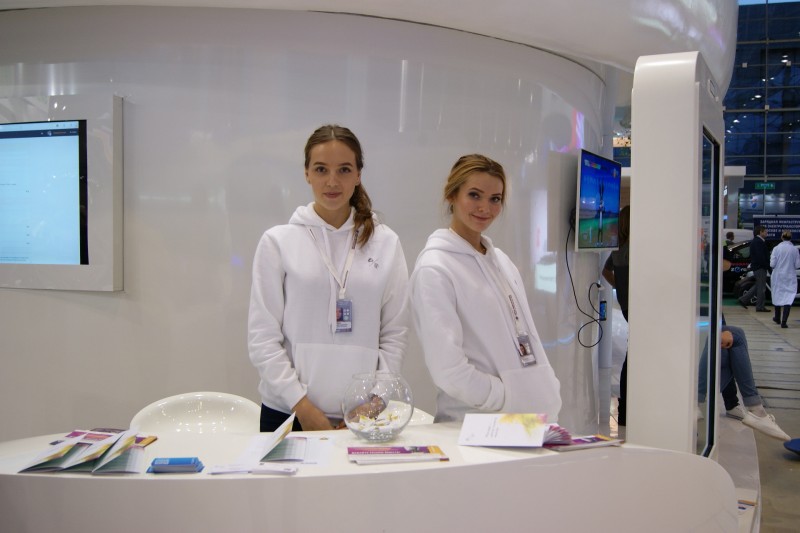
The lamp Flexbright SunLight from developers from Saransk is a modular lighting system with a variable form of light-emitting fabric. Flexible LED-film is produced by the Roll-2-Roll method - this is the printing of electronic components on a roll.
')
The international R & D center that developed this lamp specializes in the creation of light sources by printing and the development of related projects - the creation of phosphor coatings, conductive inks, a system for remote control of light emission parameters - brightness and spectrum.
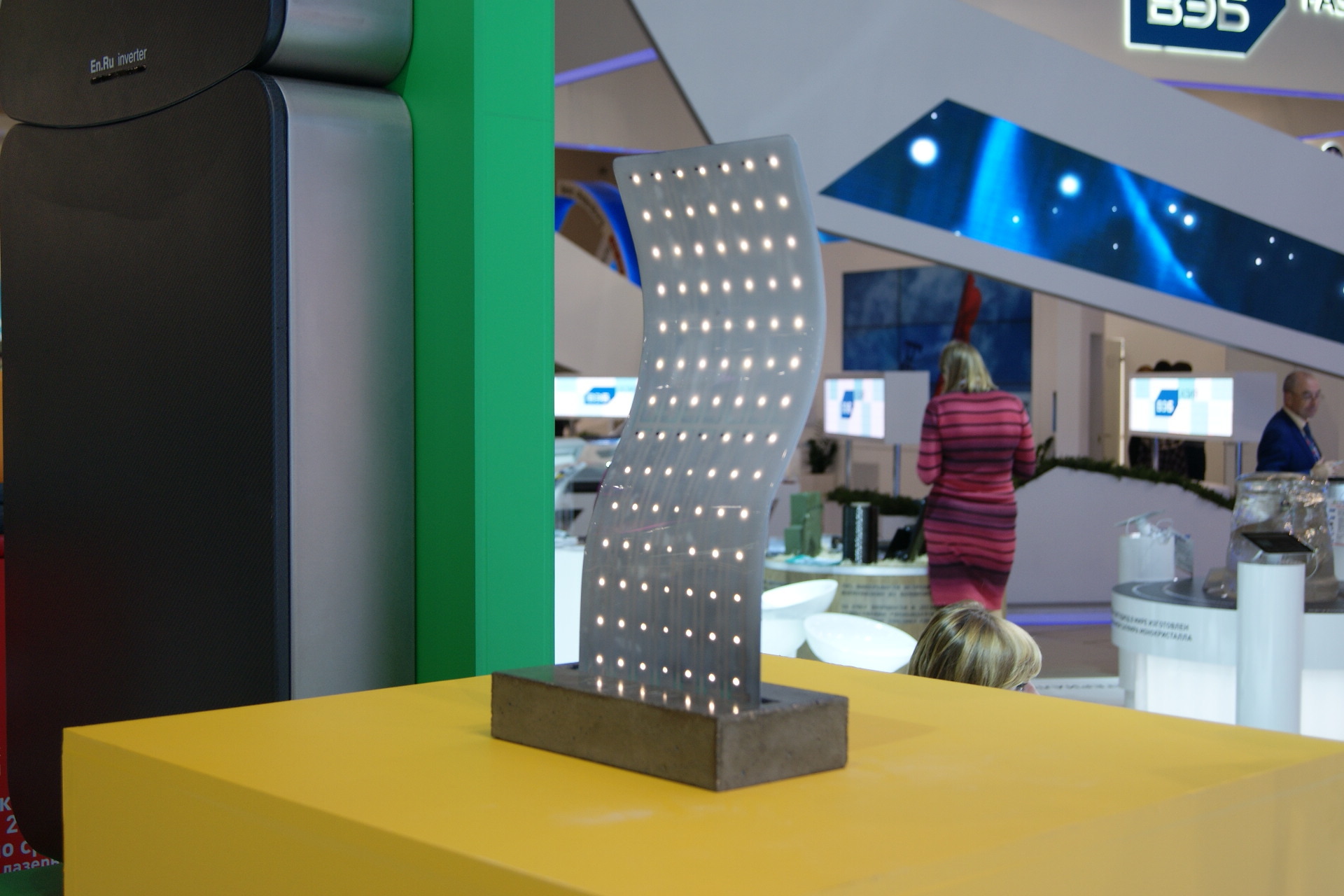
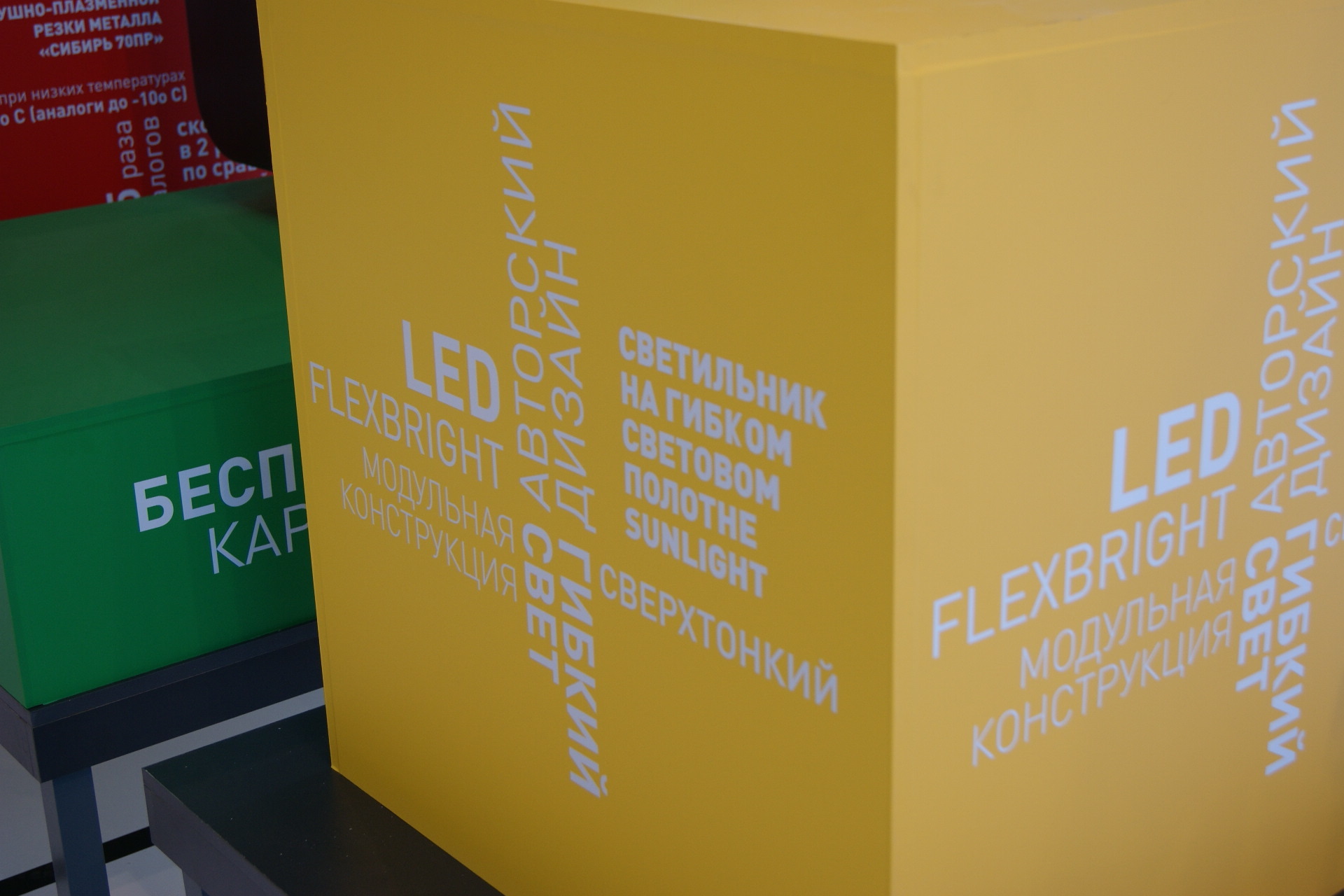
At the forum "Open Innovation" I rode in this device . This is a hardware-software complex for patients with impaired motor function. The device motivates patients to move - this is especially important for children. The company plans to develop the same complex for the rehabilitation of young children - from one to five years.
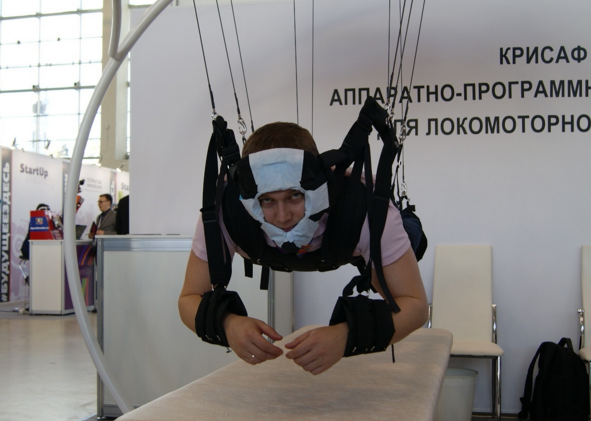
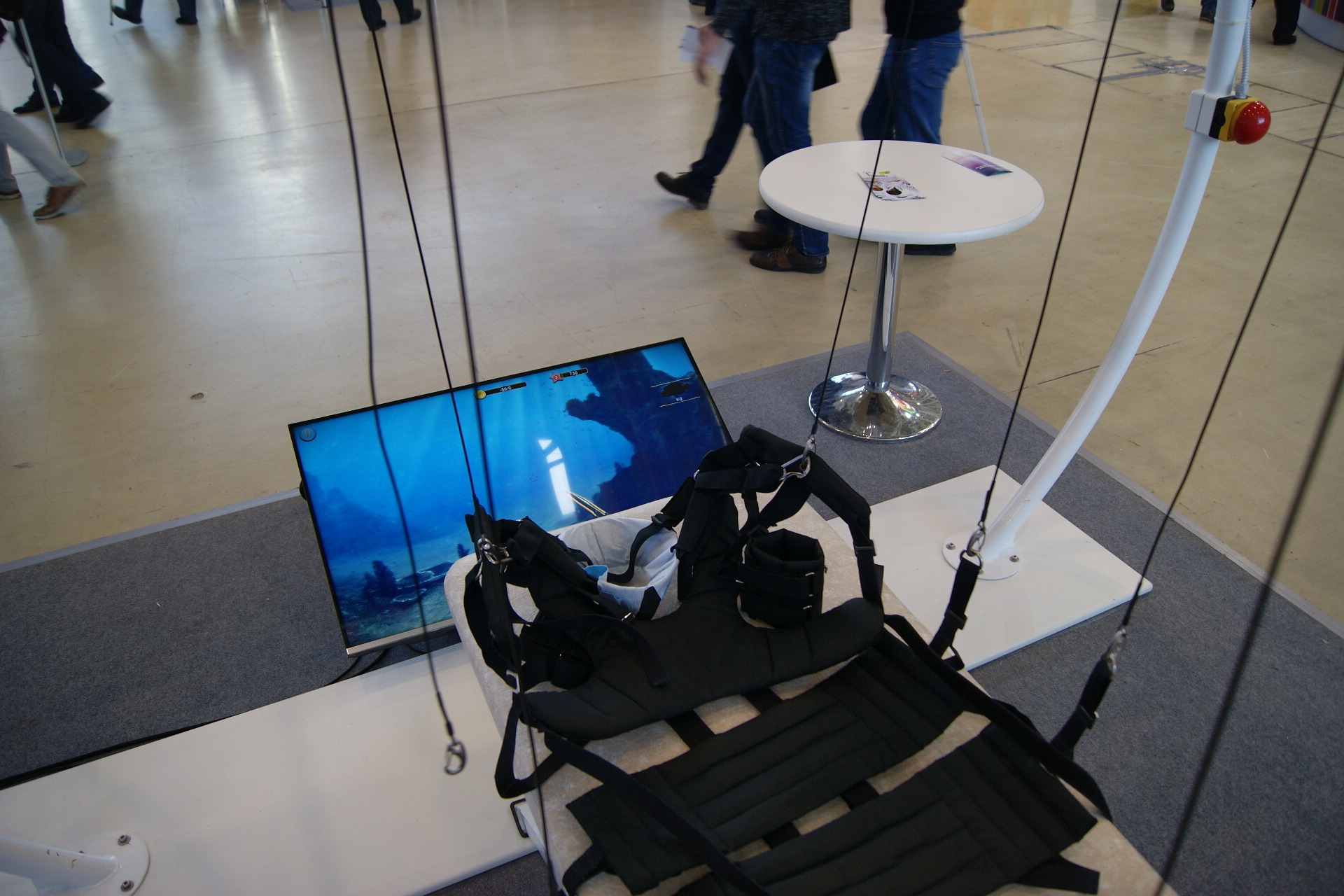
The company "Virial" at the exhibition Open Innovations 2015 presents ceramic armor elements made of silicon carbide to protect military equipment. Ceramic plates have the highest class of protection - 6a. That is, this pottery can withstand a shot from a SVD rifle with a cartridge of 7.62 × 54 mm R with an energy of 3990 J. Ceramic plates are used to protect against the ballistic effects of land equipment, ships, aircraft equipment and personnel.
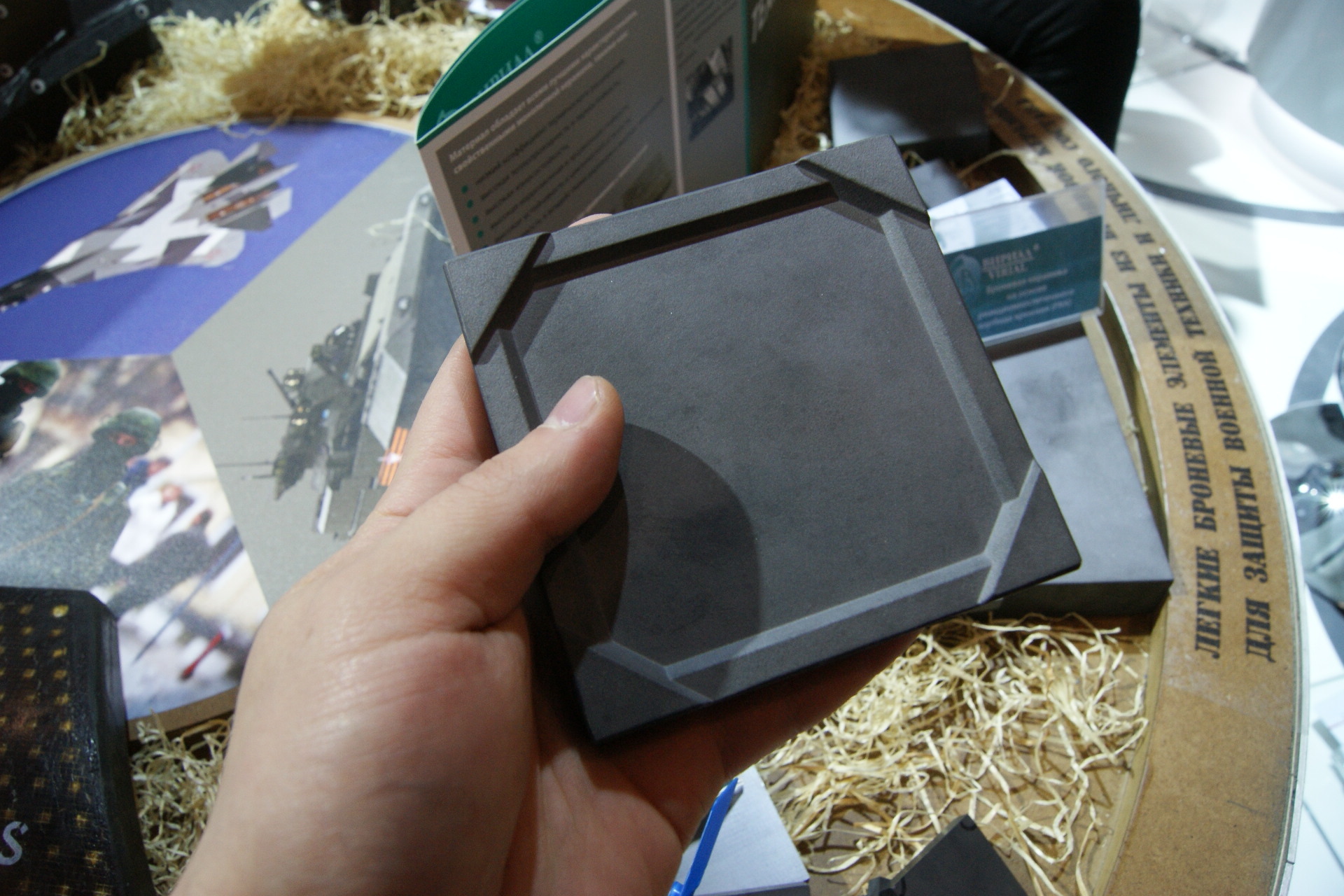

The Russian company CJSC NEVZ- Ceramics develops and manufactures nanostructured ceramics for medicine, including joint prostheses and screws for the spine, for electronics and microelectronics, and armored ceramics.
The company has established the production of hip joint endoprostheses from nanoceramics in Novosibirsk. By 2016, she plans to reach 20,000 endoprostheses per year. Now "NEVZ-Ceramics" produces dental crowns, end-fixers, plates and screws for the spine.
Since June 2015, FGBU "NIITO them. Ya. L. Tsivyana ”performed more than 150 successful surgeries on patients to replace the hip joint with the“ BEER ”endoprosthesis.

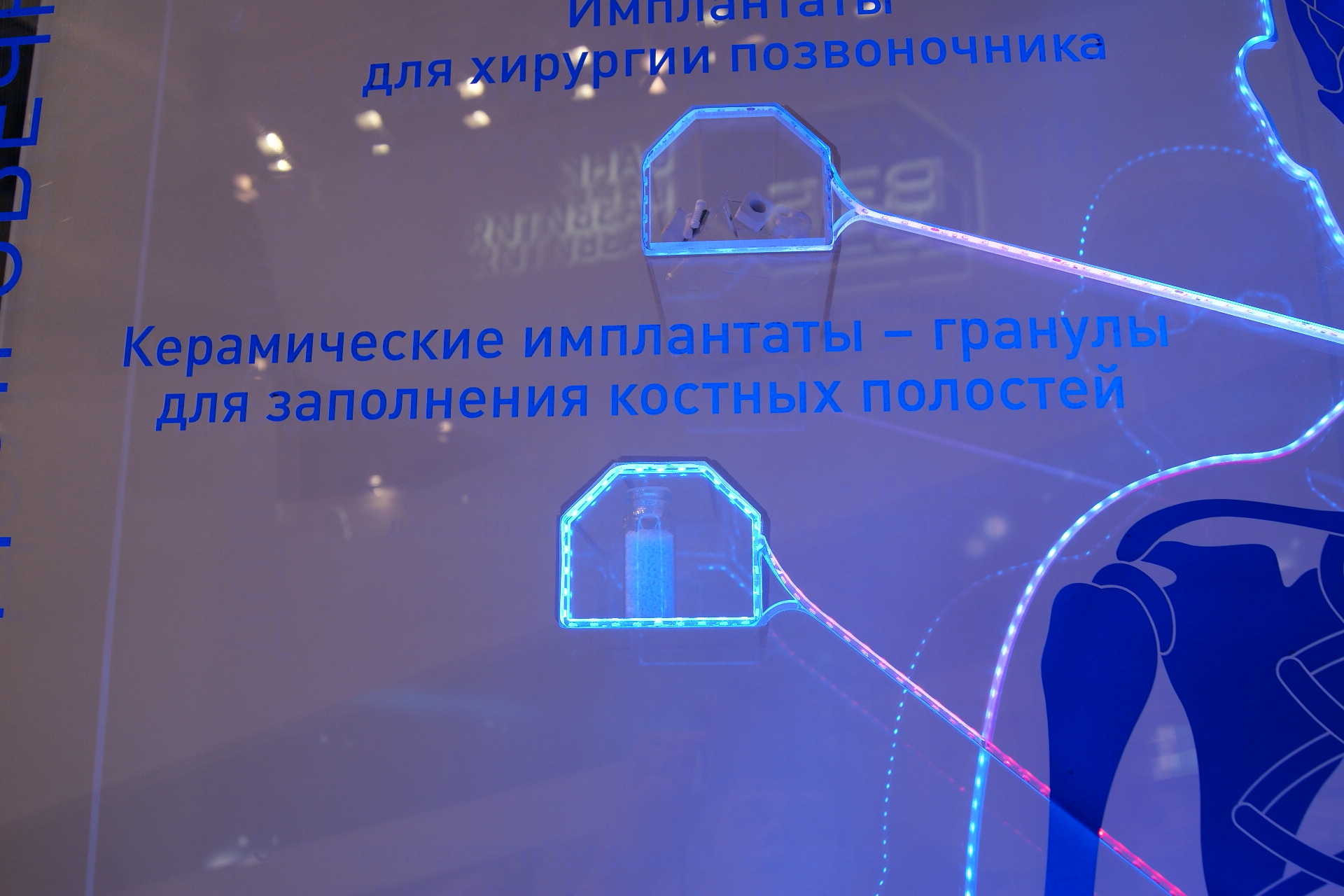
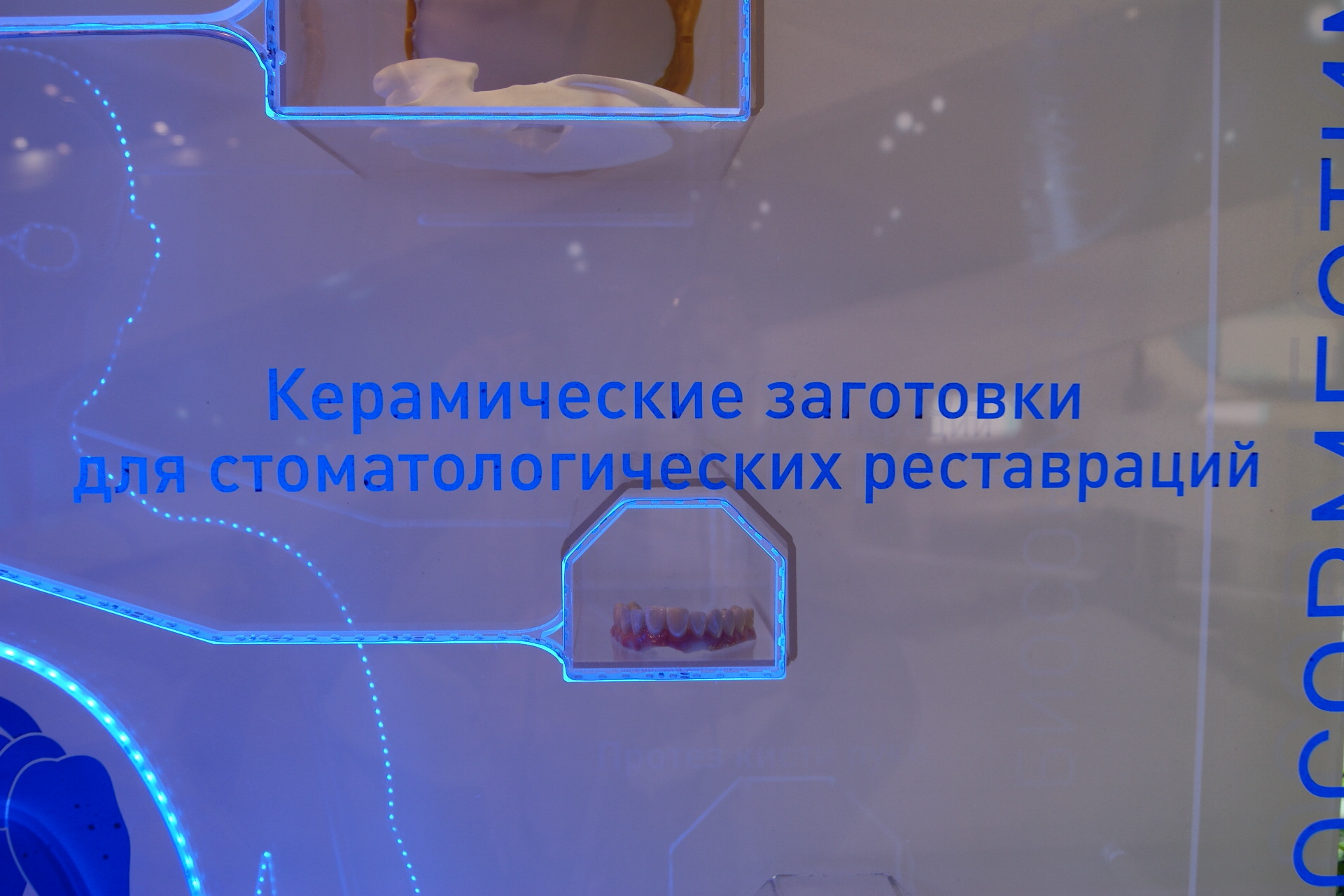
Like Virial, NEVZ-Ceramics develops materials for ballistic protection of land, air and sea equipment, and personnel equipment.
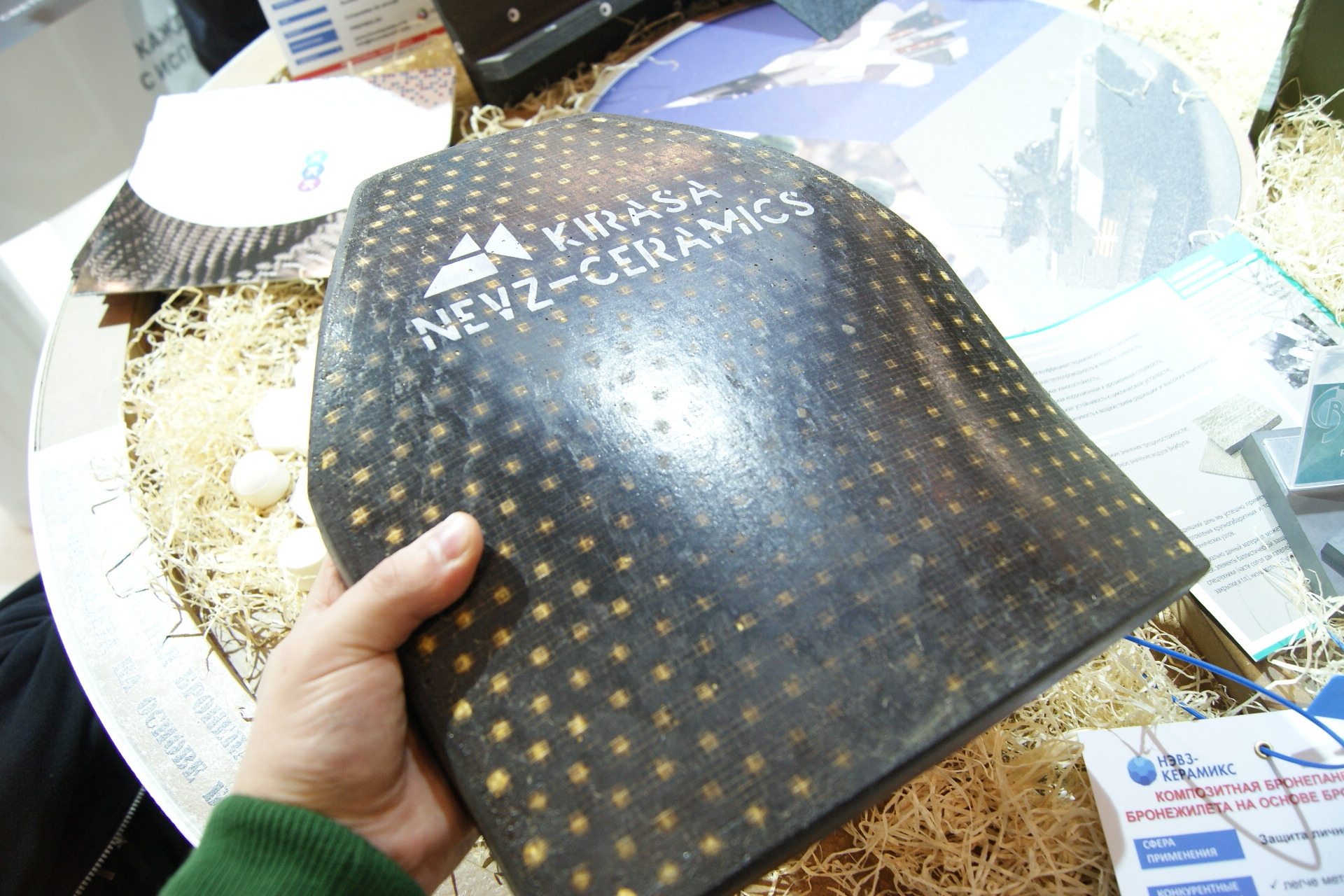
In April 2015, the Russian company ELVIS-NeoTek introduced the 40-nanometer 6-core processor VIP-1. The company uses it for its own computer vision systems - IP cameras with integrated intelligence. In Russia, this processor was the first world-class development in 40-nanometer process technology. The main component of the VIP-1 is a specialized video processor that can handle encoding and decoding of HD and 4K video streams at speeds up to 60 frames per second. The chip includes a 2-core ARM Cortex A9 with a frequency of 1 GHz, a graphics processor core, a dual-core cluster of signal and image processing, and an integrated navigation receiver core that supports three navigation systems — GLONASS, GPS, and the Chinese BeiDou. Case size - 19x19 mm, power consumption - 3 watts.
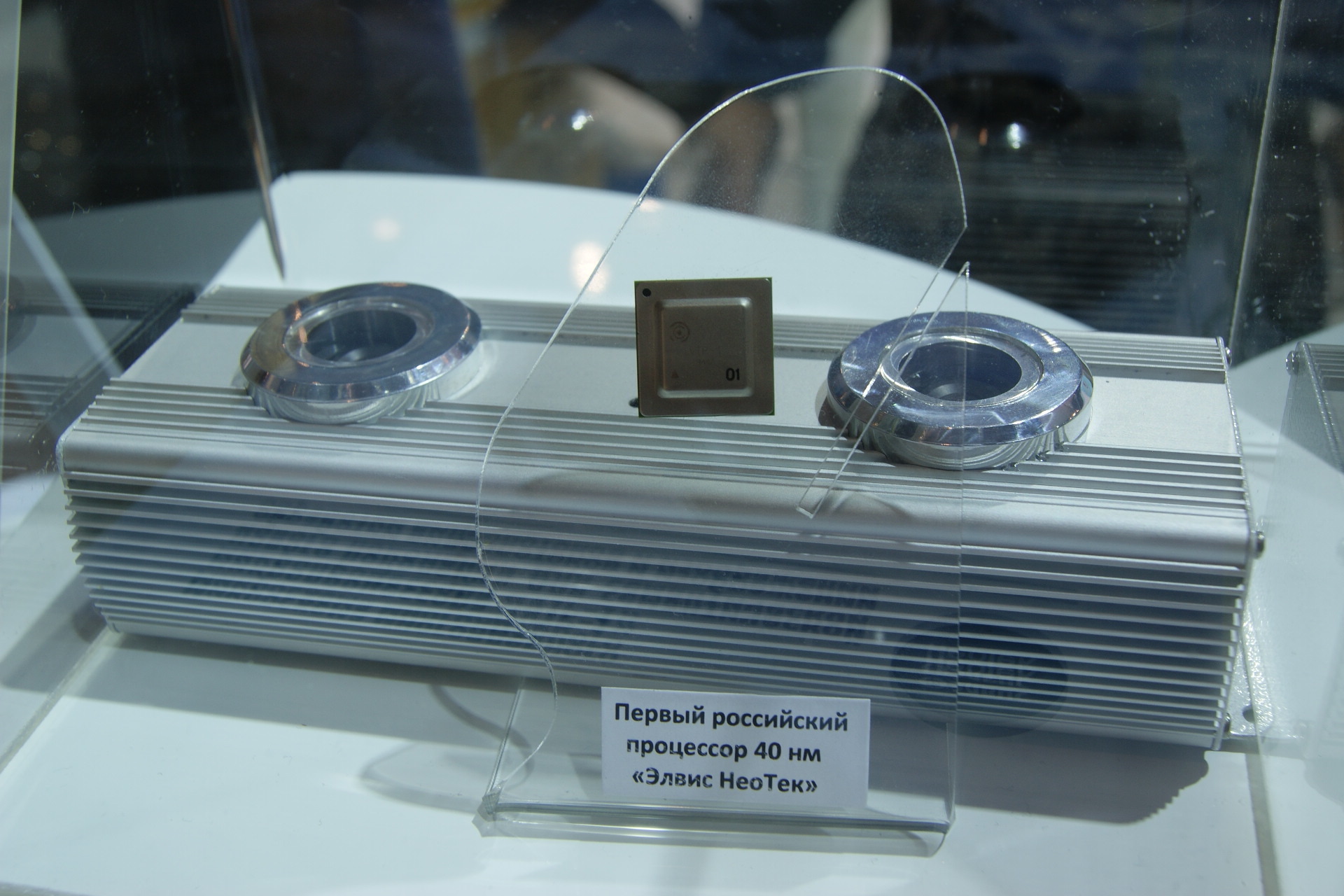
Robotic warehouse logistics complex RONAVI allows you to manage a warehouse without a person. It can be used in large logistics centers, in warehouses of distribution networks and in the organization of production lines. RONAVI increases the storage capacity by up to 50% and saves money for the maintenance of the warehouse - in particular, for heating. Payroll is reduced by 80%. The load capacity of the robot is up to 1.5 tons, the battery life is up to 6 hours, depending on the battery.
I rode on this robot and fought him .
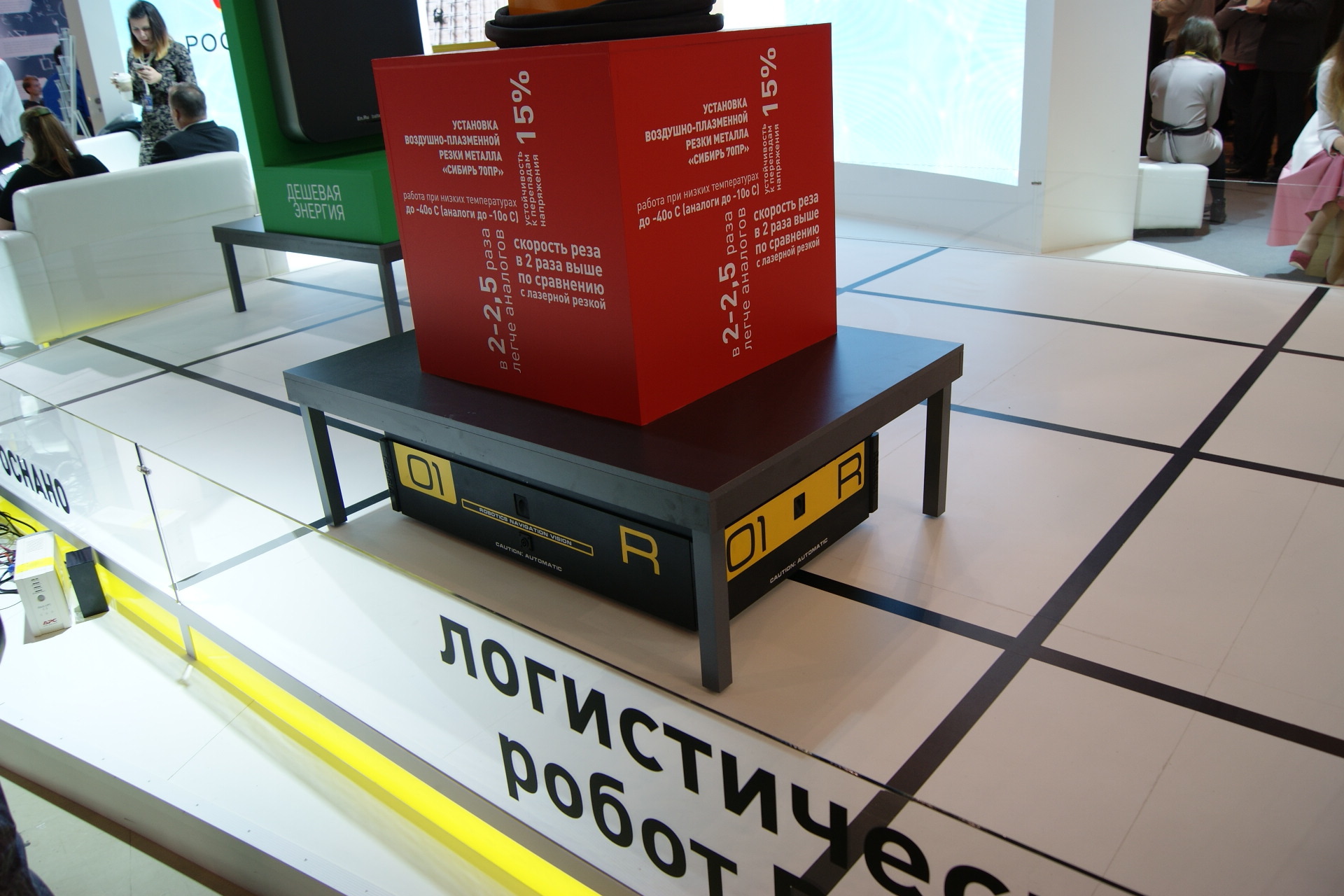
Stavropol "Monocrystal" - the world leader in the production of synthetic sapphires. They are used in electronic and optoelectronic industry. The company has been operating for 25 years and in 2013 occupied a quarter of the global sapphire market. According to a report released by high-tech market analysts Yole Developpement, the company has become the world's largest producer of artificial sapphires in terms of annual revenue.
The company brought the world's largest artificial sapphire to the Open Innovations Forum in Moscow.

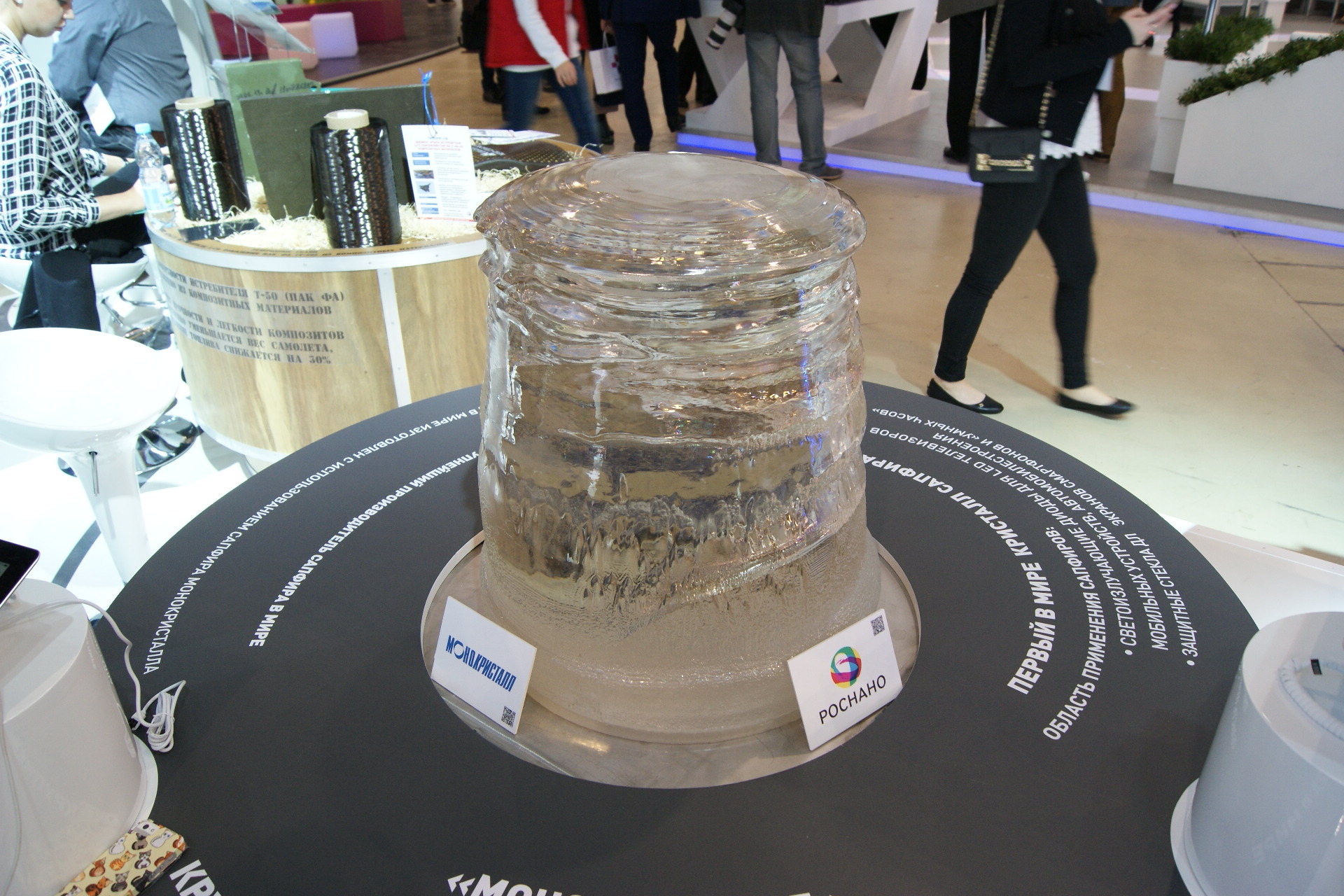
In February 2015, I wrote that the Hevel company in Chuvashia launched the first full-cycle plant for the production of solar modules in Russia . Solar modules Hevel have a property that is relevant for Russia: they generate electricity even in cloudy weather.
The company uses the technology of the Swiss company Oerlikon Solar: photo panels based on micromorphic silicon are applied on the panels. Sputtering nanolayer reduces the use of silicon. Photos from the enterprise look at Geektimes .
The company "Hevel" opened the Scientific and Technical Center at the Physical-Technical Institute. A.F. Ioffe There, the researchers developed a technology that combines the best qualities of thin-film and crystalline silicon technologies, and increased the efficiency of solar panels to 22-24 %% with an average global rate of 16%. The cost of production using this technology will decrease by 20-25%.
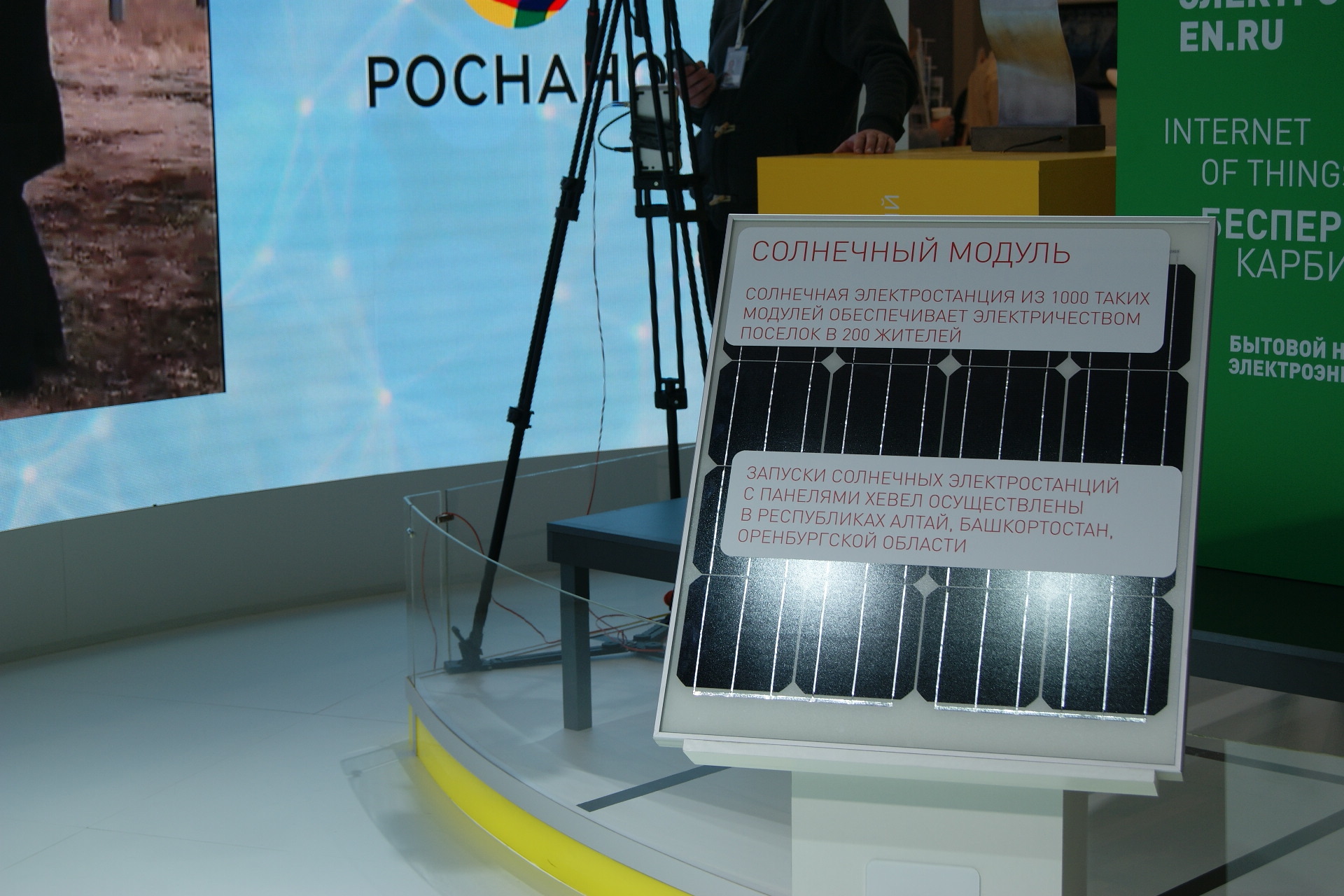
Transparent Lumineq TASEL displays operate at temperatures up to minus sixty degrees. There is no noticeable change of personnel, as in electronic reading rooms. The image goes smoothly, but so far - only one color on a transparent background.
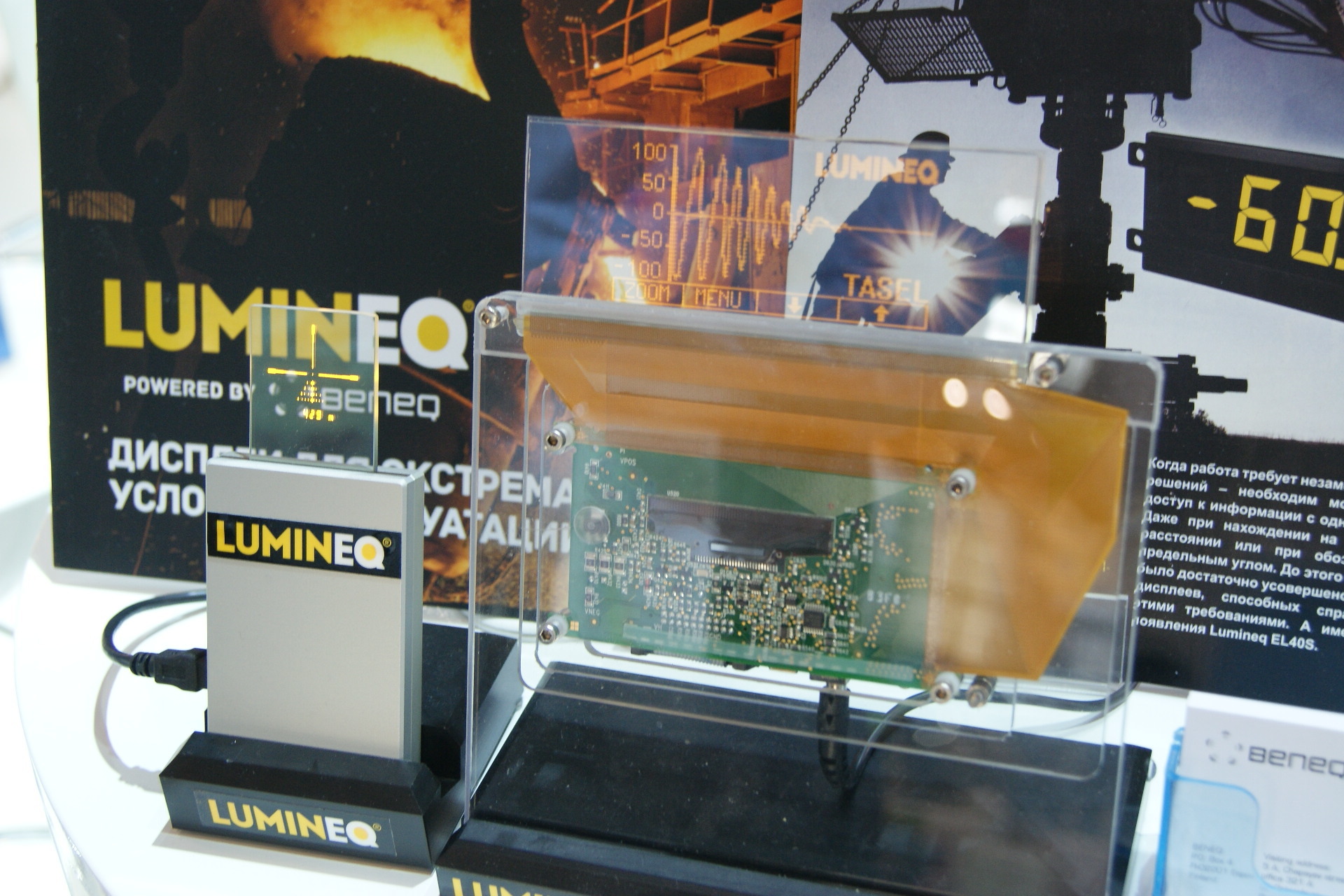
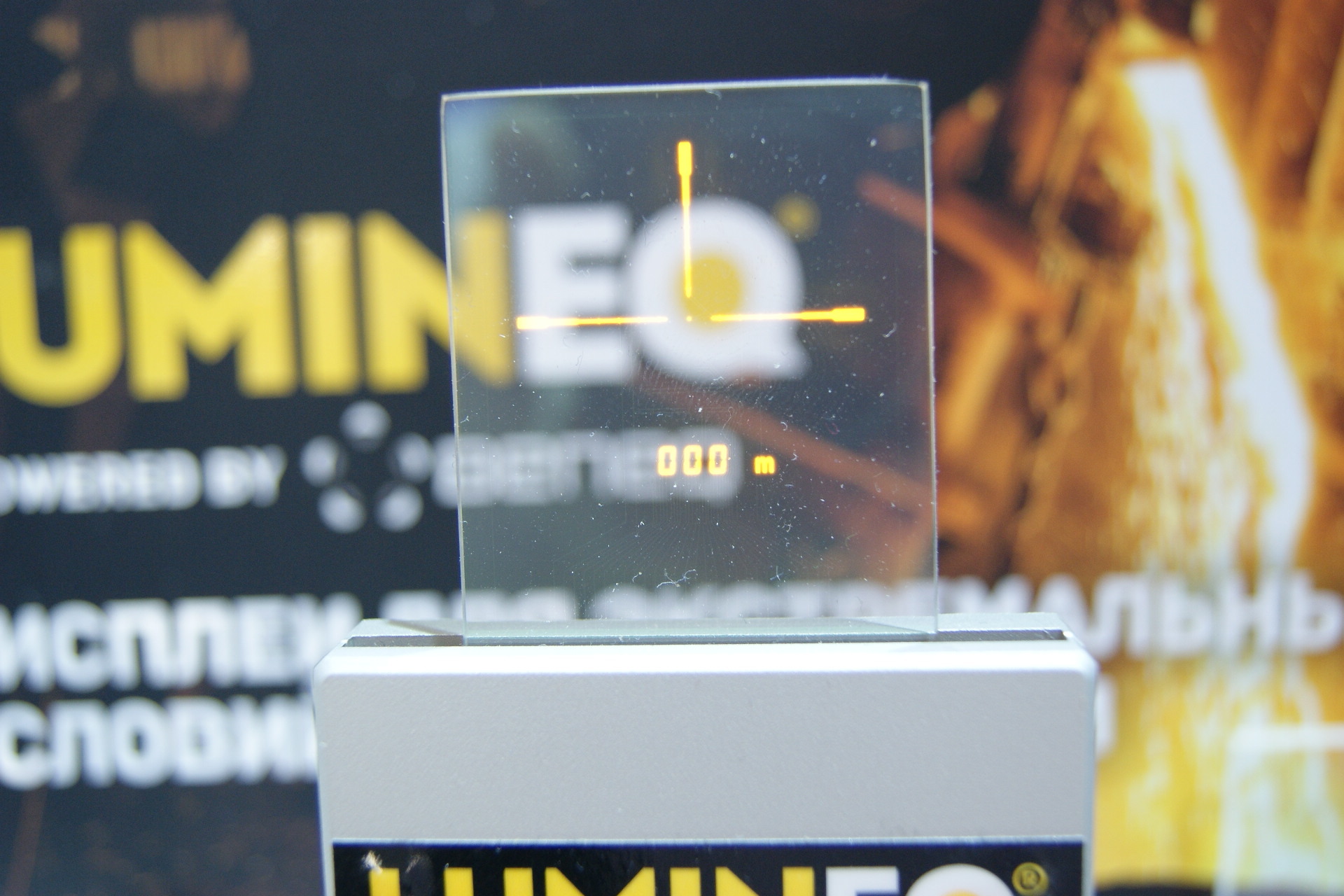
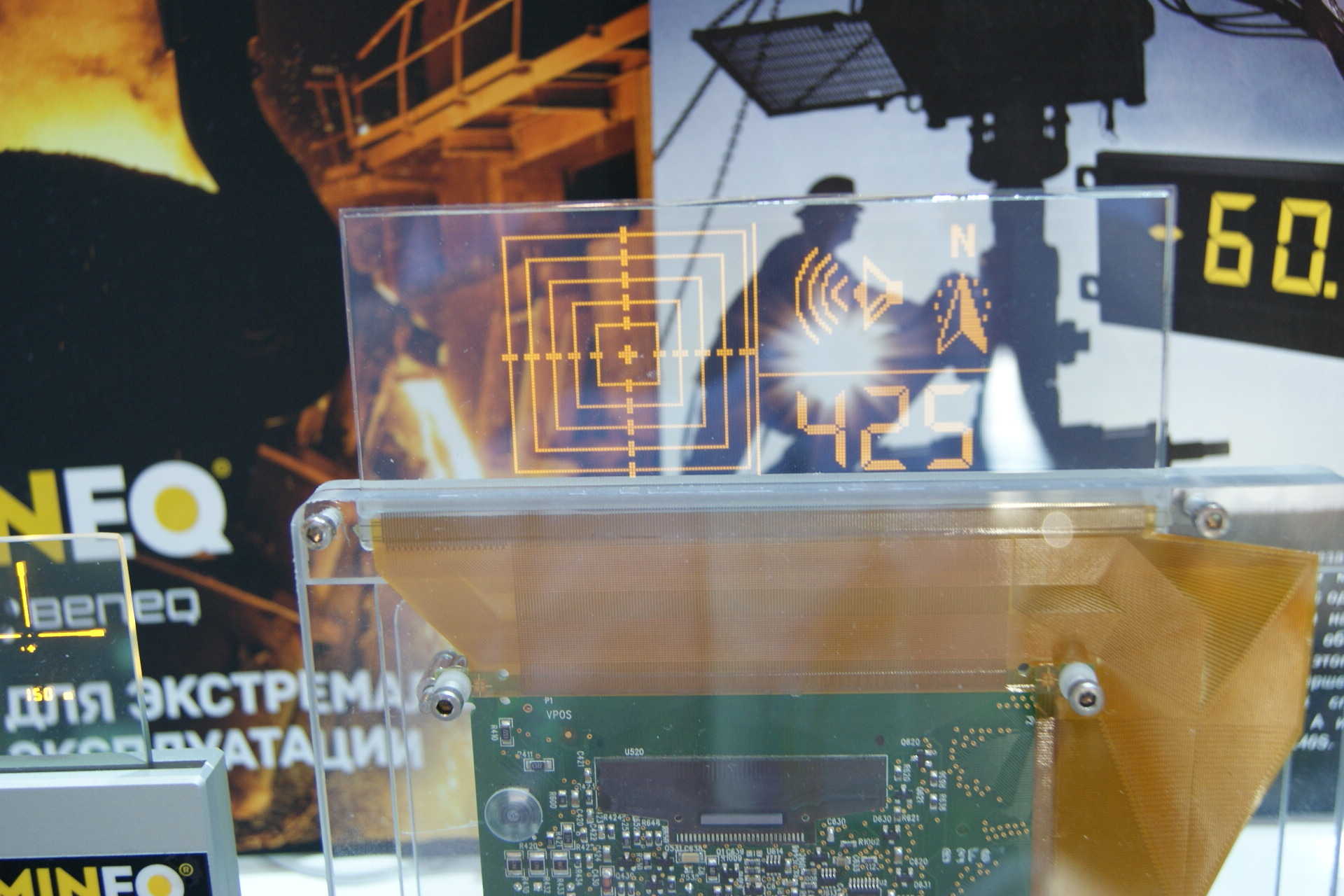
OCSiAL company produces single-walled carbon nanotubes under the trademark TUBALL. This is a universal nano-modifier that improves the mechanical properties, electrical and thermal conductivity of various materials, including rubber, composites and polymers. This product was in a black suitcase .
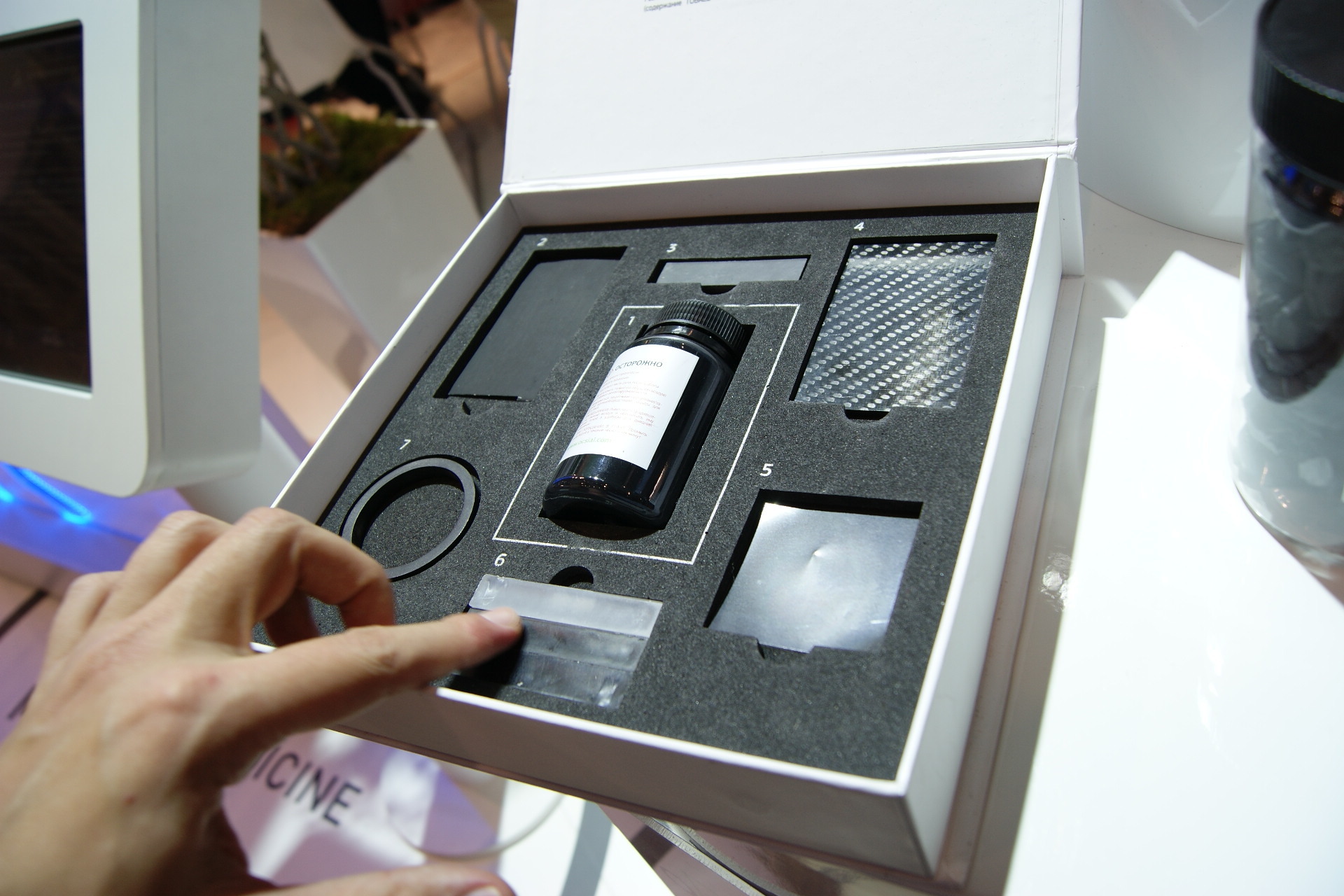
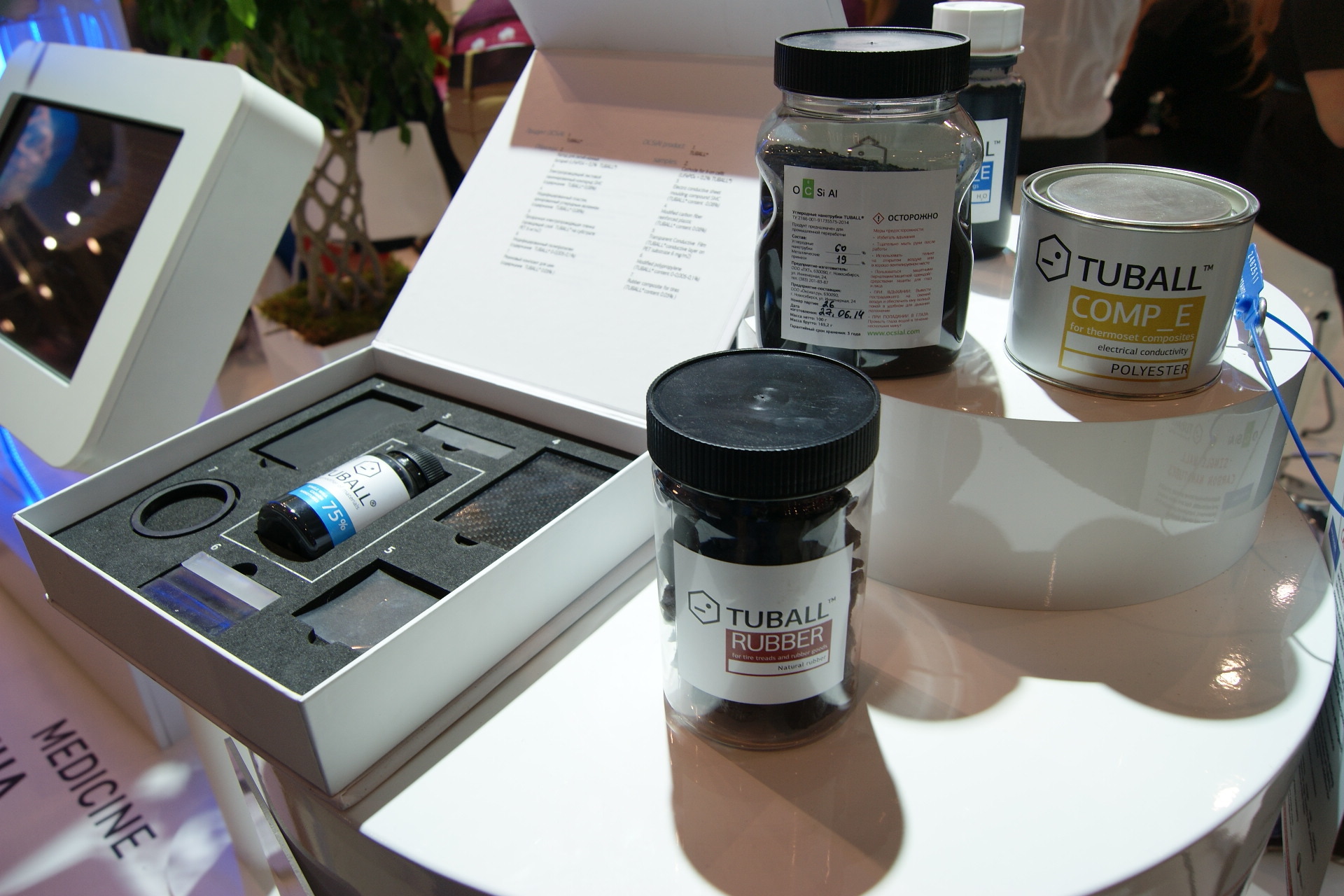
The American Solix Algredients has developed a biotechnological chain for building up microalgae on an industrial scale with the subsequent release from them of substances - antibiotics, pigments and antioxidants. The final product is used in cosmetics, baby food and food additives. The company opened an R & D center for growing microalgae at the site of the RSU of Oil and Gas named after Gubkin.
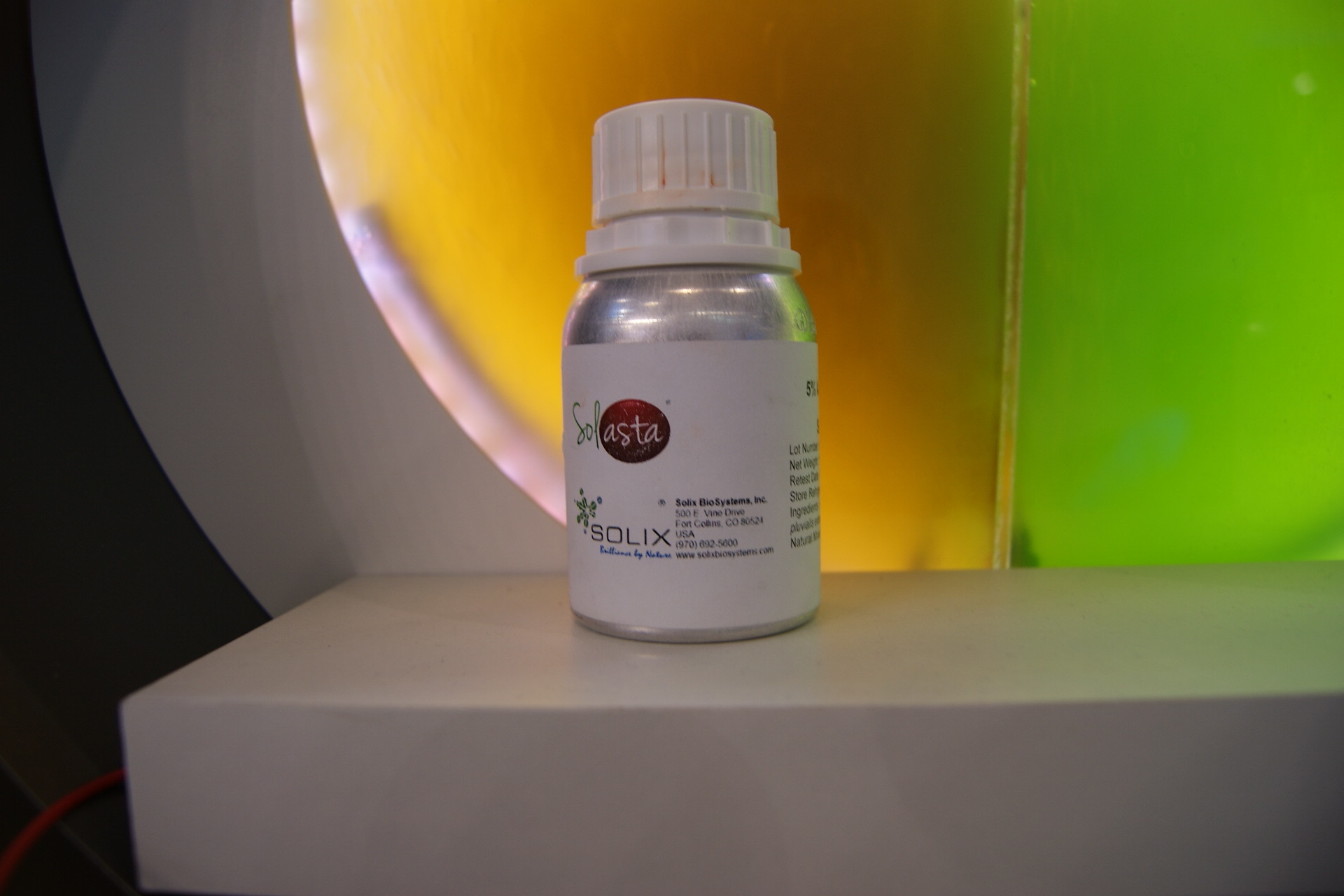
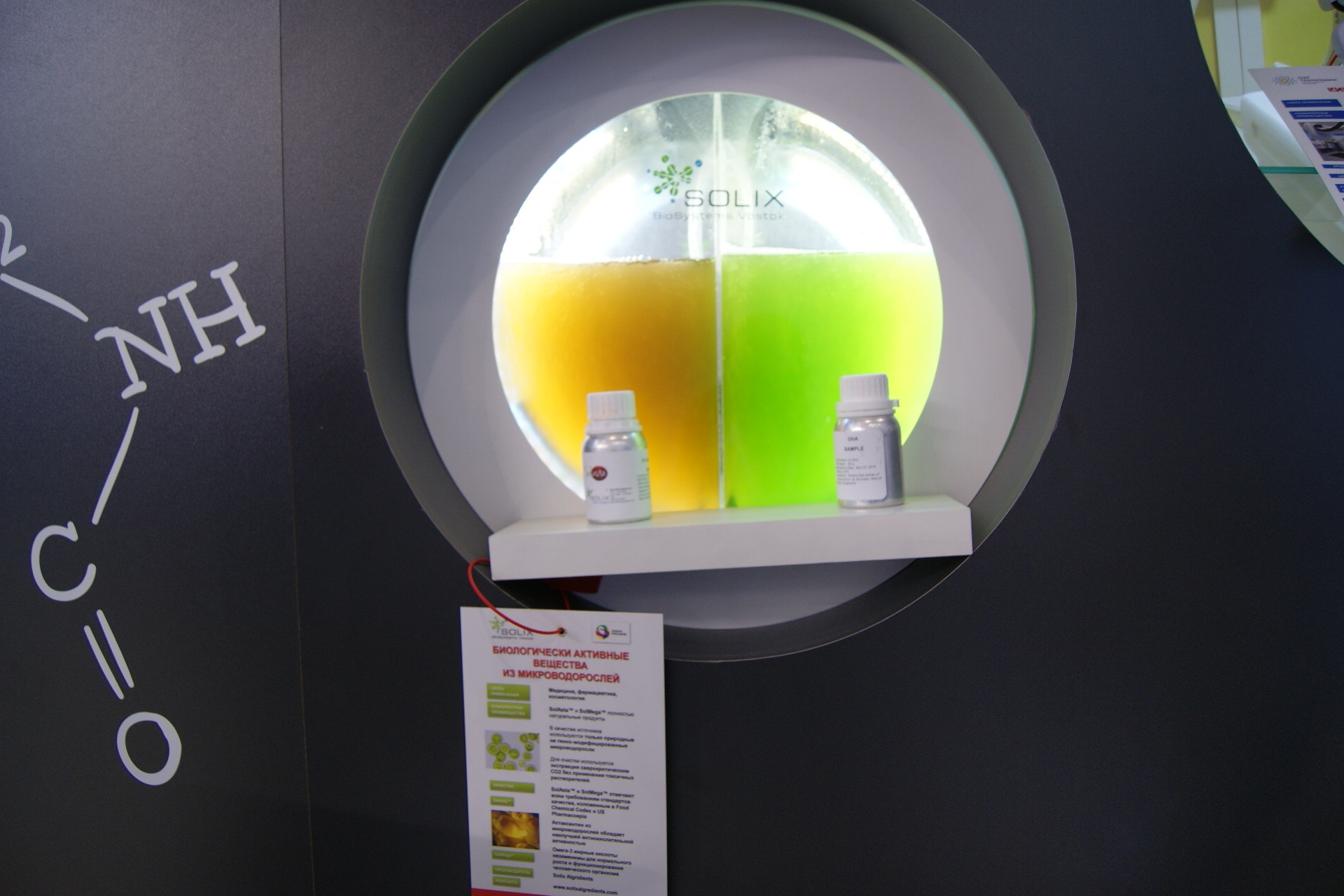
People without sight and hearing are able to communicate using instant messengers for smartphones. At the exhibition, one of the developers presented a working prototype of a glove with which it is possible to transmit messages based on Braille. The middle and ring fingers are responsible for the two upper points of the braille font, the index and little finger for the middle points, and the lower points are located on the phalanx of the index finger. The thumb is involved in the set of two lower points and in the completion of the letter set. Vibromotors on the other side of the hand are built into the glove to receive the message.

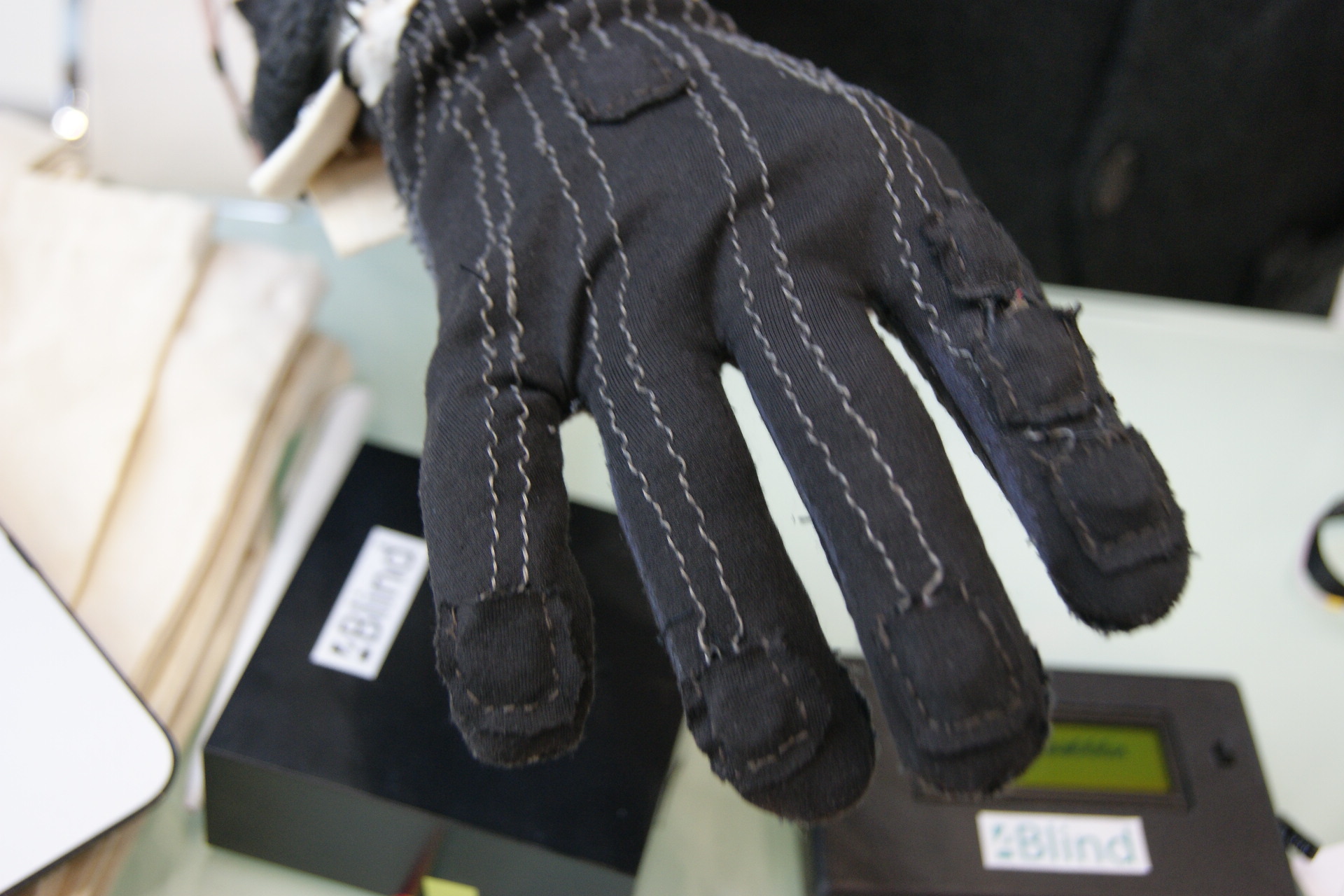
The company "Motorika" manufactures prostheses on a 3D printer according to individual parameters . The cost of such prostheses is from fifty to one hundred thousand rubles, depending on the injury. The price includes not only plastic, but also the removal of measurements, the development and refinement of the model.

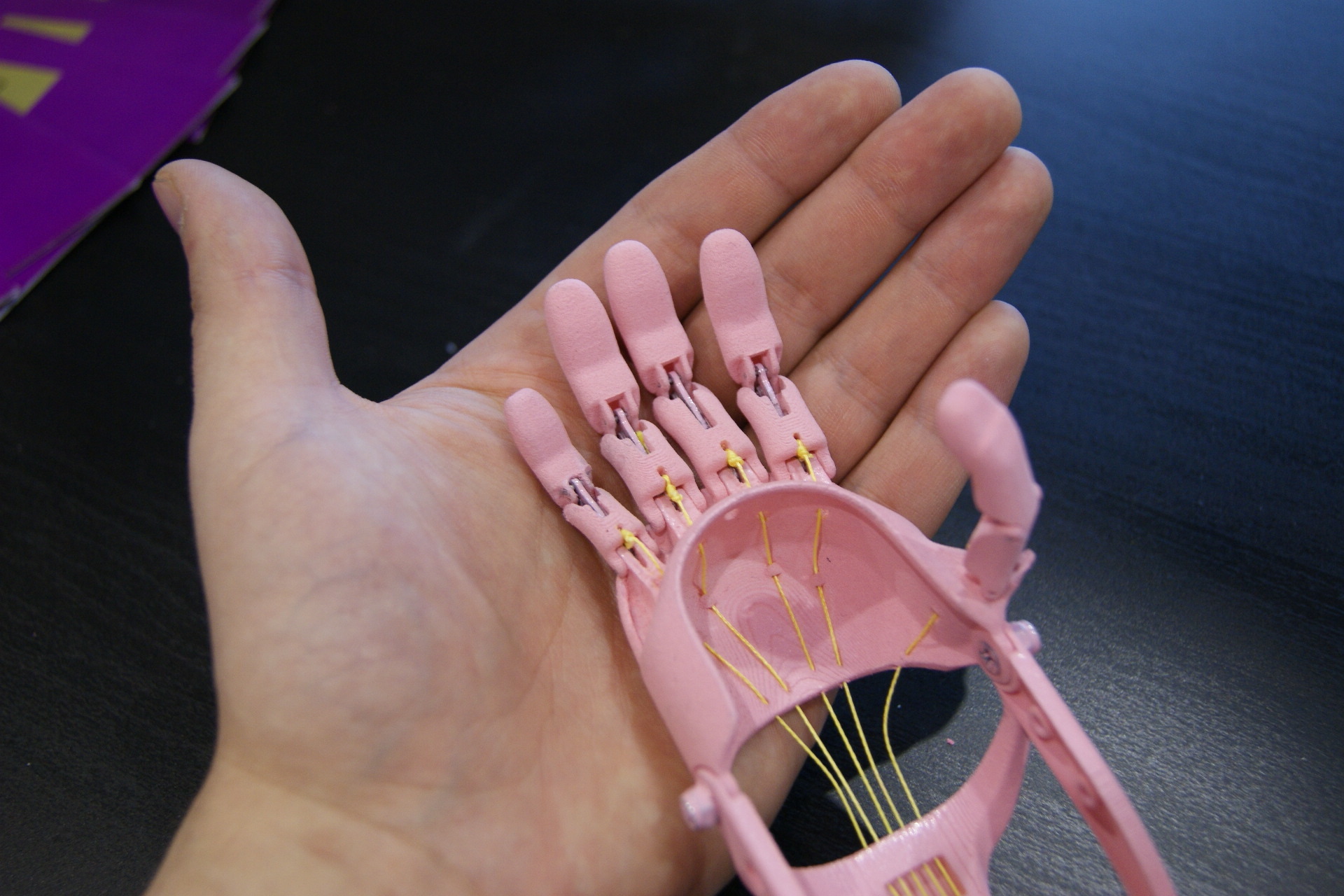
This wooden weapon was collected by sixth graders. Pistols can be charged with four rubber bands, shoot them one by one. The machine gun is multi-barreled, but, fortunately, there was no engine in the exhibition copy. Getting these rubber bands through the shirt is very painful.
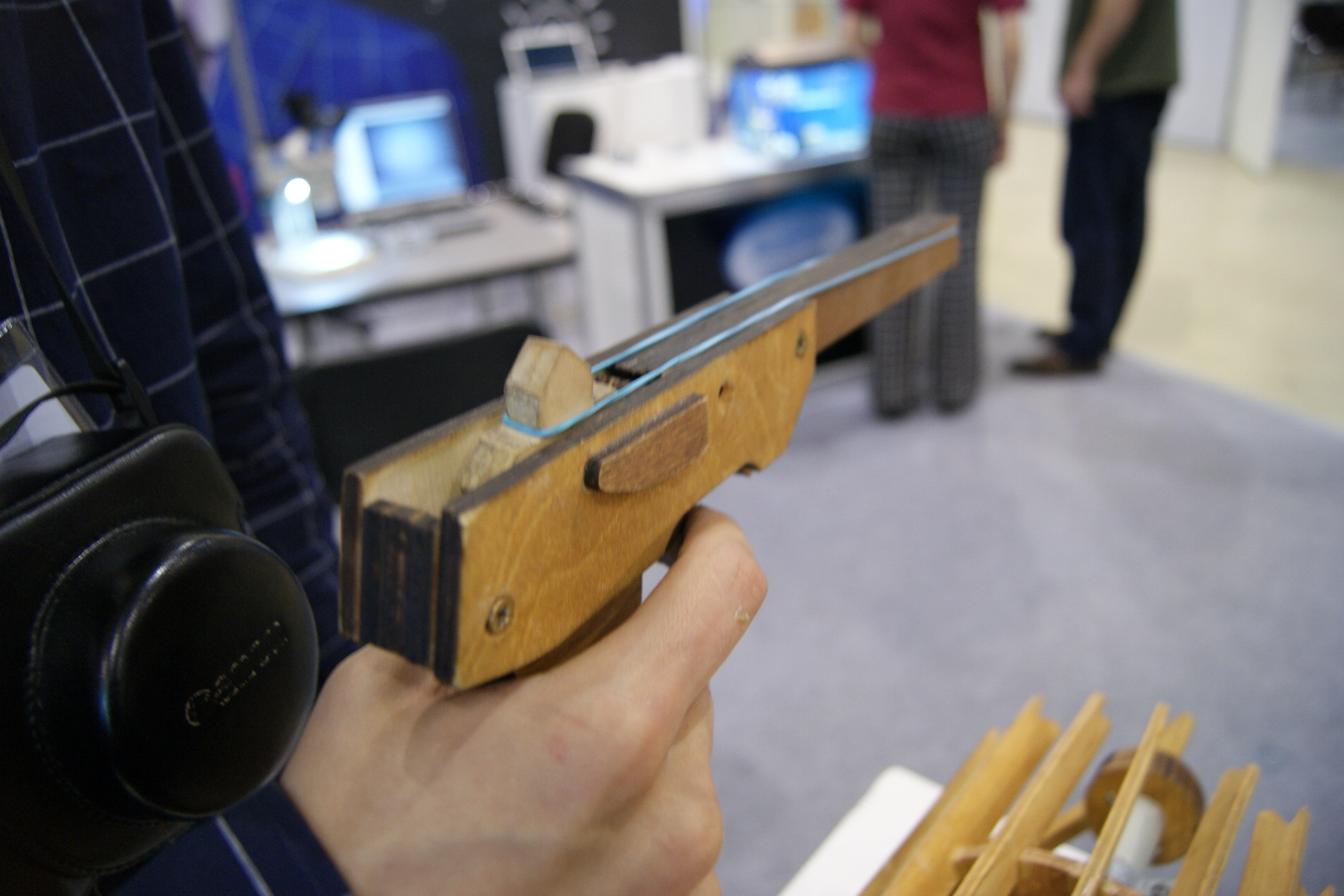
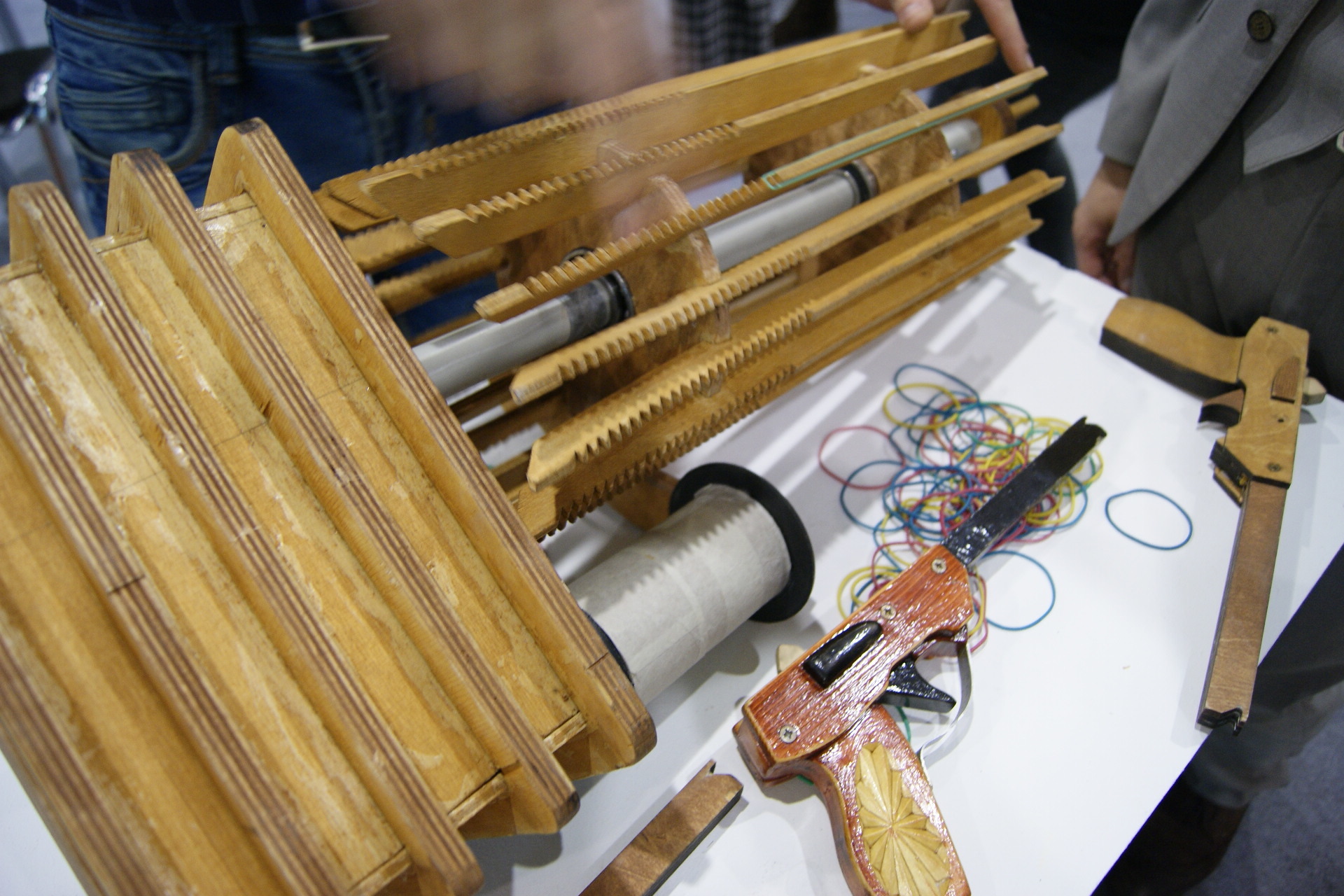
The corporation of robots brought several exhibits at once, including the speaker, but standing in place of a humanoid robot with a man of height, and this miniature Sonka - the Golden Handle, the body of which is made of warm lamp plywood. The robot plays the barrel organ and solicits money.
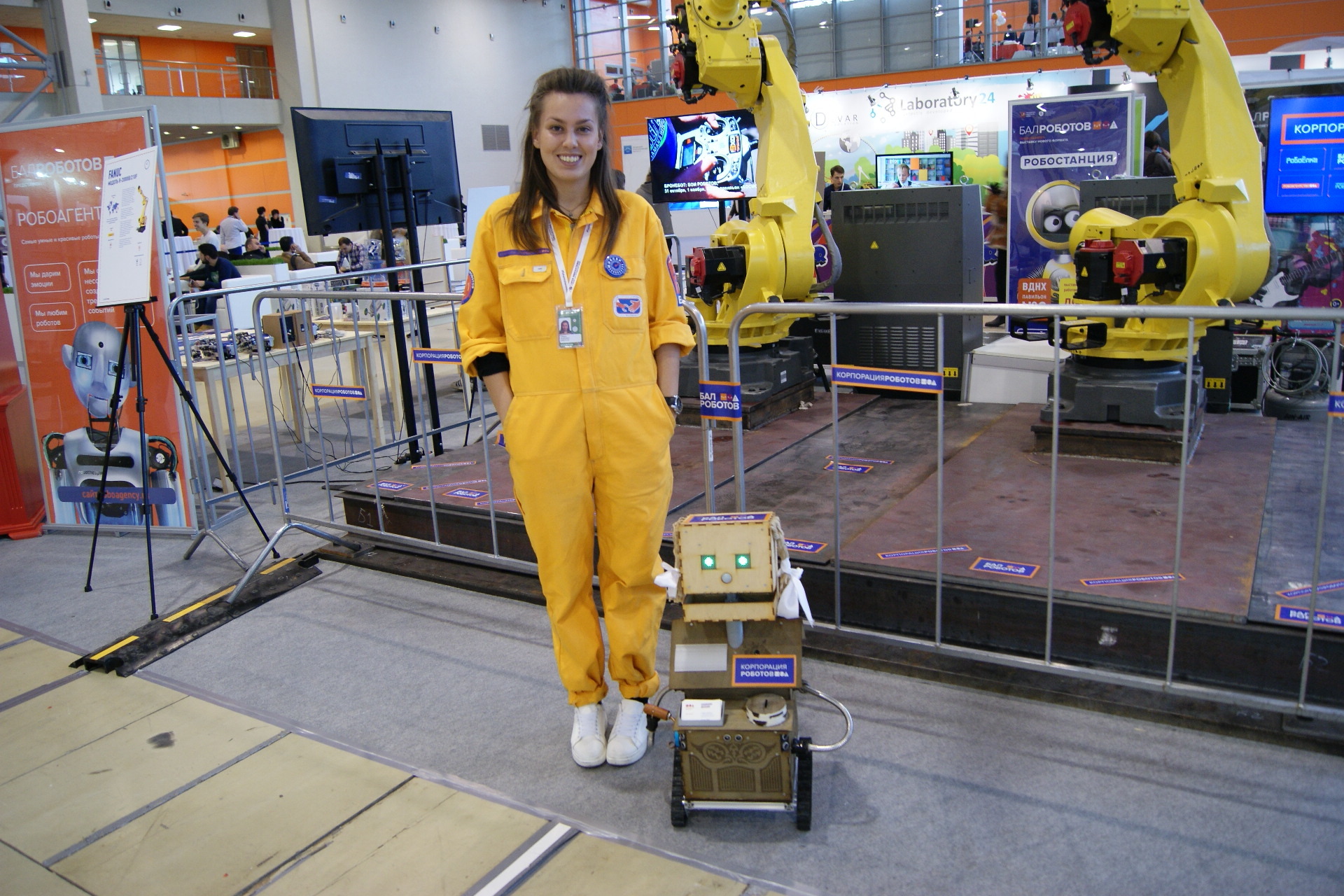
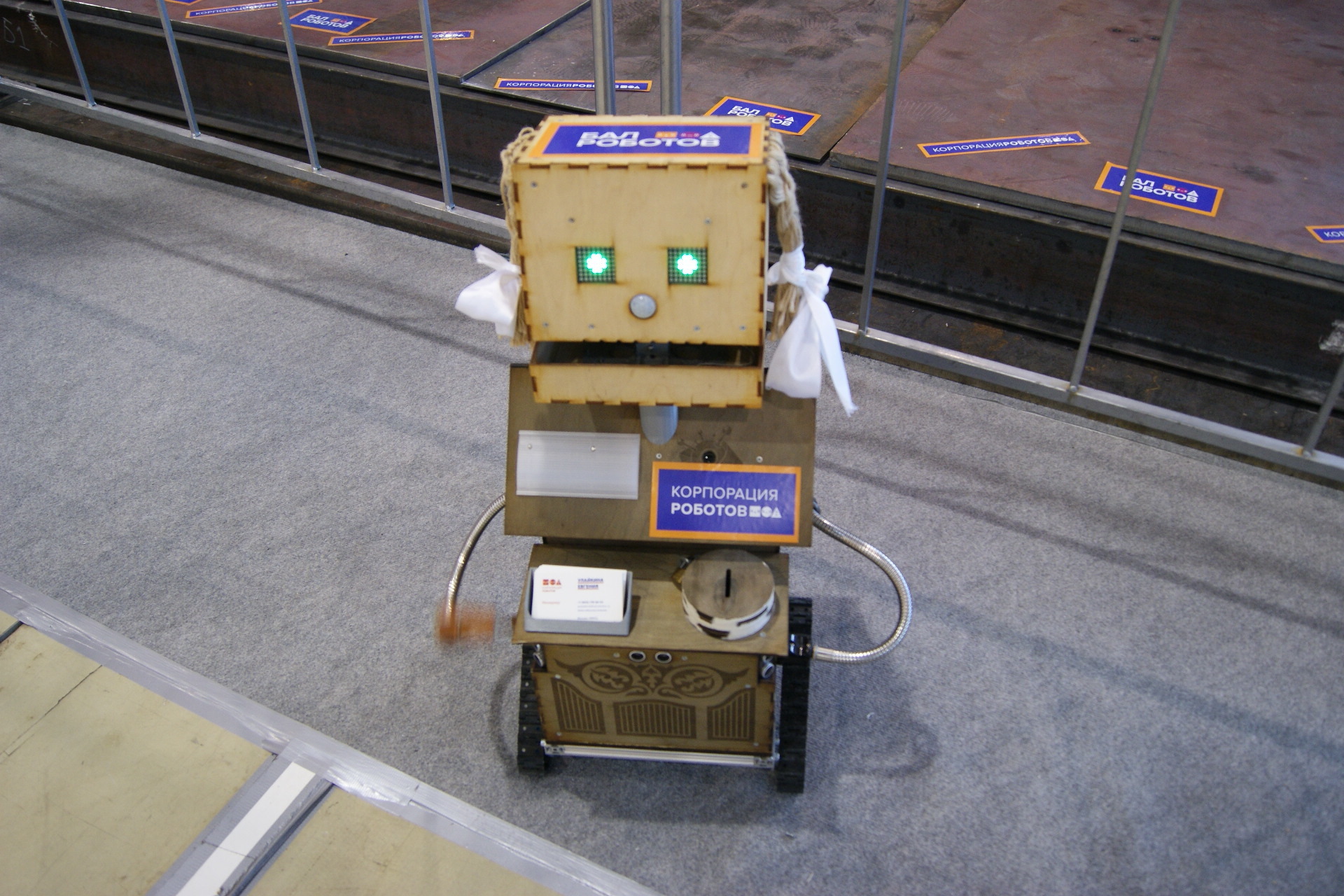
At the RVK stand there is a manipulator playing chess on three boards at once. Attempting to walk incorrectly with any figure does not roll - the robot refuses to continue the game with a cheat.

This robot reminds one of the characters of Futurama.
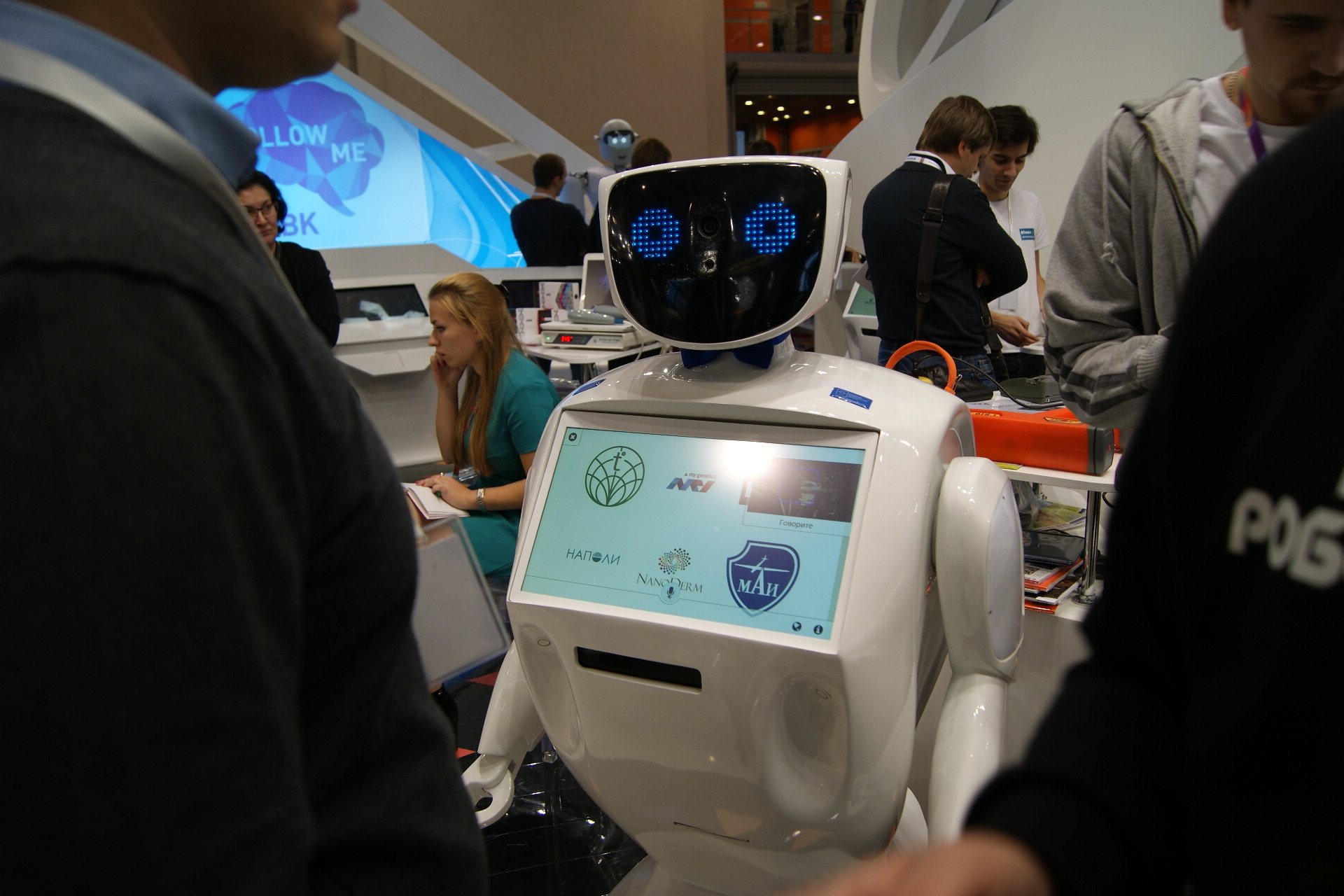
The puppet theater of robots looks both cute and sinister.



This year, I wrote that the Russian company Anisoprint will present a mobile cell for 3D printing with polymer composites at the Open Innovations forum. The final version of the cell looked like this.
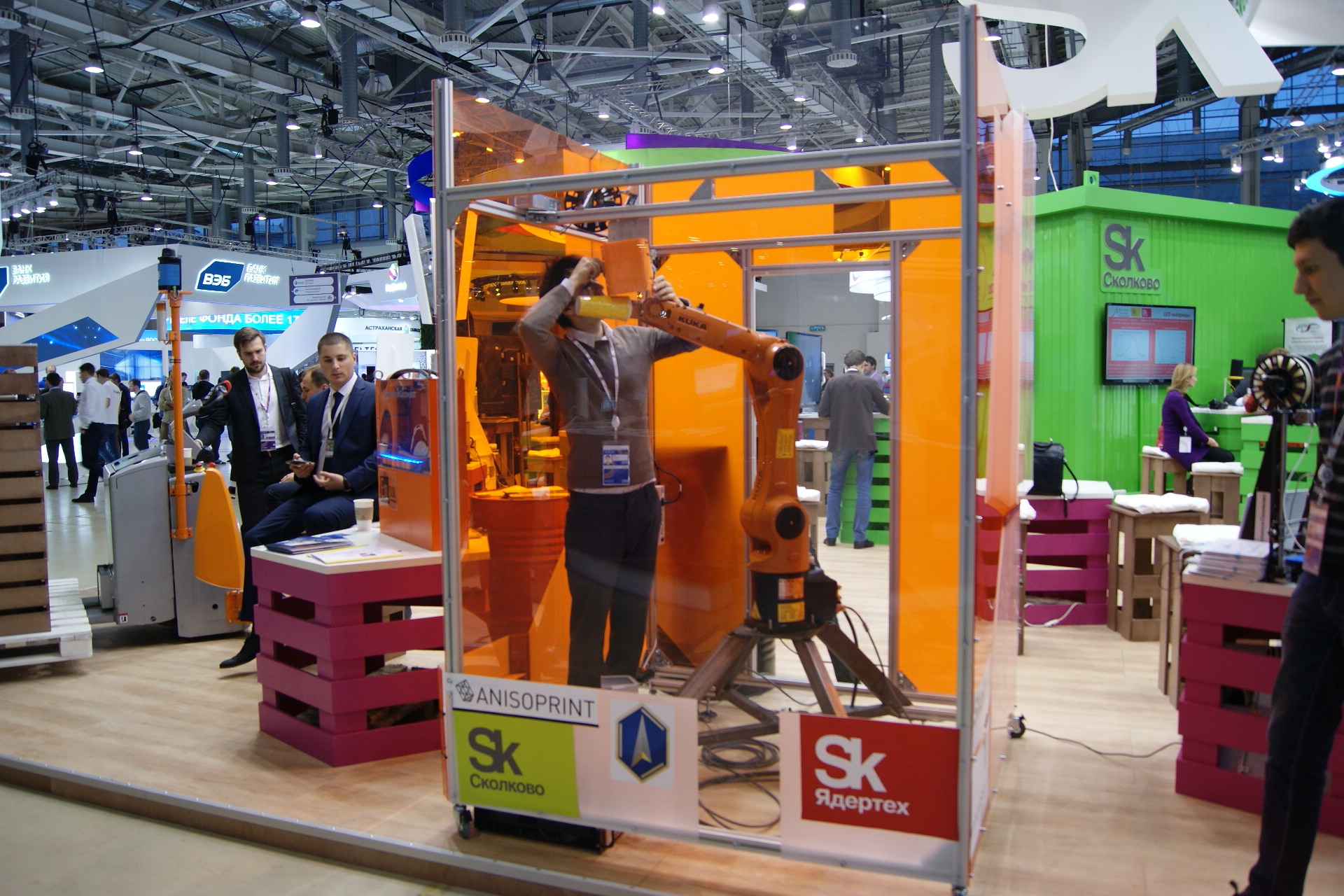
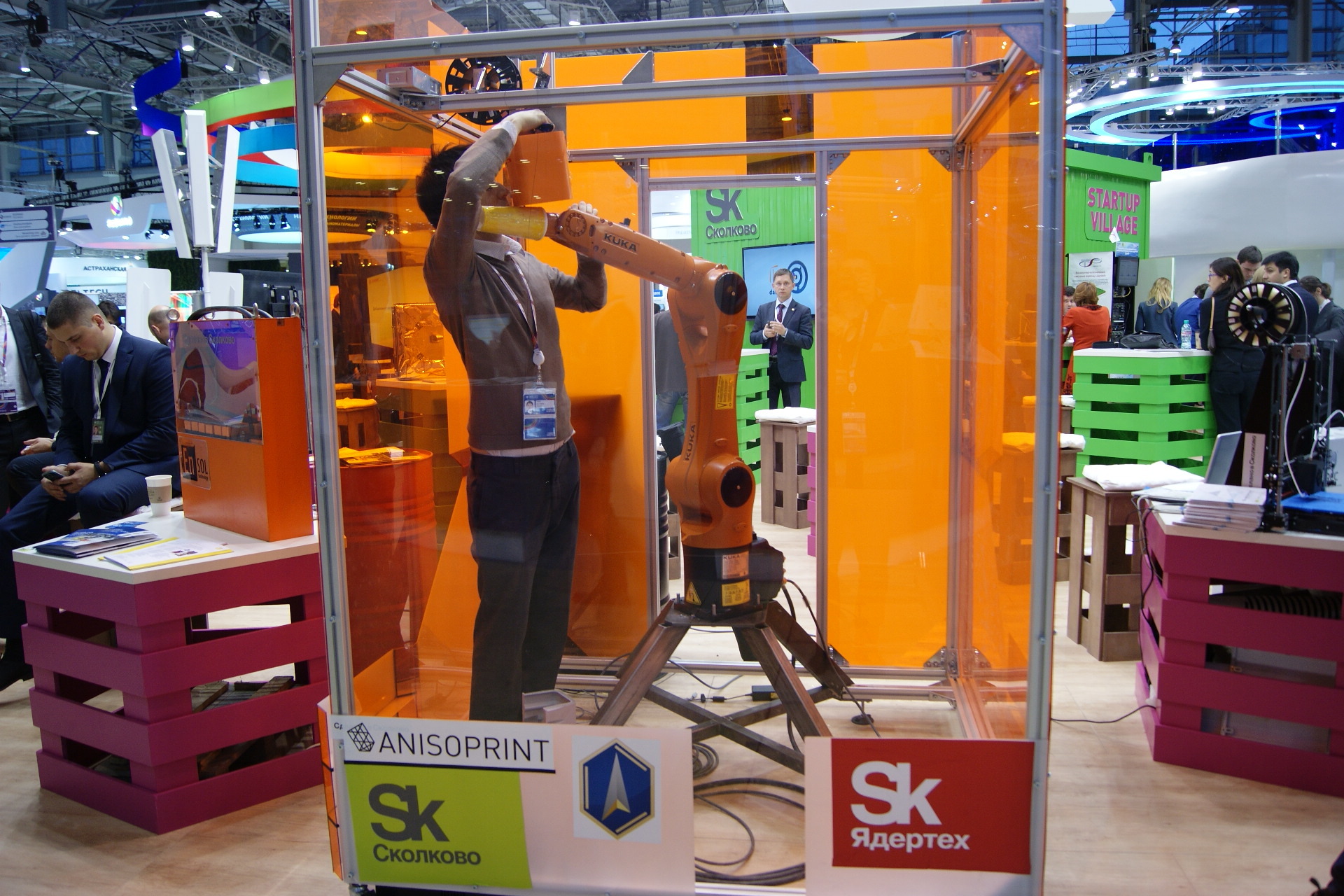
Attention: there are a lot of photos under the cut.

Flexbright SunLight: luminaire on a flexible light canvas
The lamp Flexbright SunLight from developers from Saransk is a modular lighting system with a variable form of light-emitting fabric. Flexible LED-film is produced by the Roll-2-Roll method - this is the printing of electronic components on a roll.
')
The international R & D center that developed this lamp specializes in the creation of light sources by printing and the development of related projects - the creation of phosphor coatings, conductive inks, a system for remote control of light emission parameters - brightness and spectrum.
Hardware-software complex locomotor therapy
At the forum "Open Innovation" I rode in this device . This is a hardware-software complex for patients with impaired motor function. The device motivates patients to move - this is especially important for children. The company plans to develop the same complex for the rehabilitation of young children - from one to five years.

Armored ceramics
The company "Virial" at the exhibition Open Innovations 2015 presents ceramic armor elements made of silicon carbide to protect military equipment. Ceramic plates have the highest class of protection - 6a. That is, this pottery can withstand a shot from a SVD rifle with a cartridge of 7.62 × 54 mm R with an energy of 3990 J. Ceramic plates are used to protect against the ballistic effects of land equipment, ships, aircraft equipment and personnel.

Nanoceramics: spine bolts and prostheses
The Russian company CJSC NEVZ- Ceramics develops and manufactures nanostructured ceramics for medicine, including joint prostheses and screws for the spine, for electronics and microelectronics, and armored ceramics.
The company has established the production of hip joint endoprostheses from nanoceramics in Novosibirsk. By 2016, she plans to reach 20,000 endoprostheses per year. Now "NEVZ-Ceramics" produces dental crowns, end-fixers, plates and screws for the spine.
Since June 2015, FGBU "NIITO them. Ya. L. Tsivyana ”performed more than 150 successful surgeries on patients to replace the hip joint with the“ BEER ”endoprosthesis.
Like Virial, NEVZ-Ceramics develops materials for ballistic protection of land, air and sea equipment, and personnel equipment.
Semantic processors
In April 2015, the Russian company ELVIS-NeoTek introduced the 40-nanometer 6-core processor VIP-1. The company uses it for its own computer vision systems - IP cameras with integrated intelligence. In Russia, this processor was the first world-class development in 40-nanometer process technology. The main component of the VIP-1 is a specialized video processor that can handle encoding and decoding of HD and 4K video streams at speeds up to 60 frames per second. The chip includes a 2-core ARM Cortex A9 with a frequency of 1 GHz, a graphics processor core, a dual-core cluster of signal and image processing, and an integrated navigation receiver core that supports three navigation systems — GLONASS, GPS, and the Chinese BeiDou. Case size - 19x19 mm, power consumption - 3 watts.
Robotic warehouse: RONAVI
Robotic warehouse logistics complex RONAVI allows you to manage a warehouse without a person. It can be used in large logistics centers, in warehouses of distribution networks and in the organization of production lines. RONAVI increases the storage capacity by up to 50% and saves money for the maintenance of the warehouse - in particular, for heating. Payroll is reduced by 80%. The load capacity of the robot is up to 1.5 tons, the battery life is up to 6 hours, depending on the battery.
I rode on this robot and fought him .
Synthetic sapphires
Stavropol "Monocrystal" - the world leader in the production of synthetic sapphires. They are used in electronic and optoelectronic industry. The company has been operating for 25 years and in 2013 occupied a quarter of the global sapphire market. According to a report released by high-tech market analysts Yole Developpement, the company has become the world's largest producer of artificial sapphires in terms of annual revenue.
The company brought the world's largest artificial sapphire to the Open Innovations Forum in Moscow.


Hevel photovoltaic modules
In February 2015, I wrote that the Hevel company in Chuvashia launched the first full-cycle plant for the production of solar modules in Russia . Solar modules Hevel have a property that is relevant for Russia: they generate electricity even in cloudy weather.
The company uses the technology of the Swiss company Oerlikon Solar: photo panels based on micromorphic silicon are applied on the panels. Sputtering nanolayer reduces the use of silicon. Photos from the enterprise look at Geektimes .
The company "Hevel" opened the Scientific and Technical Center at the Physical-Technical Institute. A.F. Ioffe There, the researchers developed a technology that combines the best qualities of thin-film and crystalline silicon technologies, and increased the efficiency of solar panels to 22-24 %% with an average global rate of 16%. The cost of production using this technology will decrease by 20-25%.
TASEL Transparent Electroluminescent Displays
Transparent Lumineq TASEL displays operate at temperatures up to minus sixty degrees. There is no noticeable change of personnel, as in electronic reading rooms. The image goes smoothly, but so far - only one color on a transparent background.
OCSiAl Single Wall Carbon Nanotubes
OCSiAL company produces single-walled carbon nanotubes under the trademark TUBALL. This is a universal nano-modifier that improves the mechanical properties, electrical and thermal conductivity of various materials, including rubber, composites and polymers. This product was in a black suitcase .
Biologically active substances from microalgae
The American Solix Algredients has developed a biotechnological chain for building up microalgae on an industrial scale with the subsequent release from them of substances - antibiotics, pigments and antioxidants. The final product is used in cosmetics, baby food and food additives. The company opened an R & D center for growing microalgae at the site of the RSU of Oil and Gas named after Gubkin.
Braille Deafblind Glove
People without sight and hearing are able to communicate using instant messengers for smartphones. At the exhibition, one of the developers presented a working prototype of a glove with which it is possible to transmit messages based on Braille. The middle and ring fingers are responsible for the two upper points of the braille font, the index and little finger for the middle points, and the lower points are located on the phalanx of the index finger. The thumb is involved in the set of two lower points and in the completion of the letter set. Vibromotors on the other side of the hand are built into the glove to receive the message.
Traction prostheses printed on a 3D printer
The company "Motorika" manufactures prostheses on a 3D printer according to individual parameters . The cost of such prostheses is from fifty to one hundred thousand rubles, depending on the injury. The price includes not only plastic, but also the removal of measurements, the development and refinement of the model.
Pistols and multi-barreled hands of sixth graders
This wooden weapon was collected by sixth graders. Pistols can be charged with four rubber bands, shoot them one by one. The machine gun is multi-barreled, but, fortunately, there was no engine in the exhibition copy. Getting these rubber bands through the shirt is very painful.
Robots
The corporation of robots brought several exhibits at once, including the speaker, but standing in place of a humanoid robot with a man of height, and this miniature Sonka - the Golden Handle, the body of which is made of warm lamp plywood. The robot plays the barrel organ and solicits money.
At the RVK stand there is a manipulator playing chess on three boards at once. Attempting to walk incorrectly with any figure does not roll - the robot refuses to continue the game with a cheat.
This robot reminds one of the characters of Futurama.
The puppet theater of robots looks both cute and sinister.
This year, I wrote that the Russian company Anisoprint will present a mobile cell for 3D printing with polymer composites at the Open Innovations forum. The final version of the cell looked like this.
Source: https://habr.com/ru/post/366823/
All Articles